A Review of Intelligentization System and Architecture for Ultra-Precision Machining Process
Abstract
:1. Introduction
2. Intelligent Monitoring of Machining Environment
2.1. Machining Environmental Factors
2.2. Vibration Monitoring
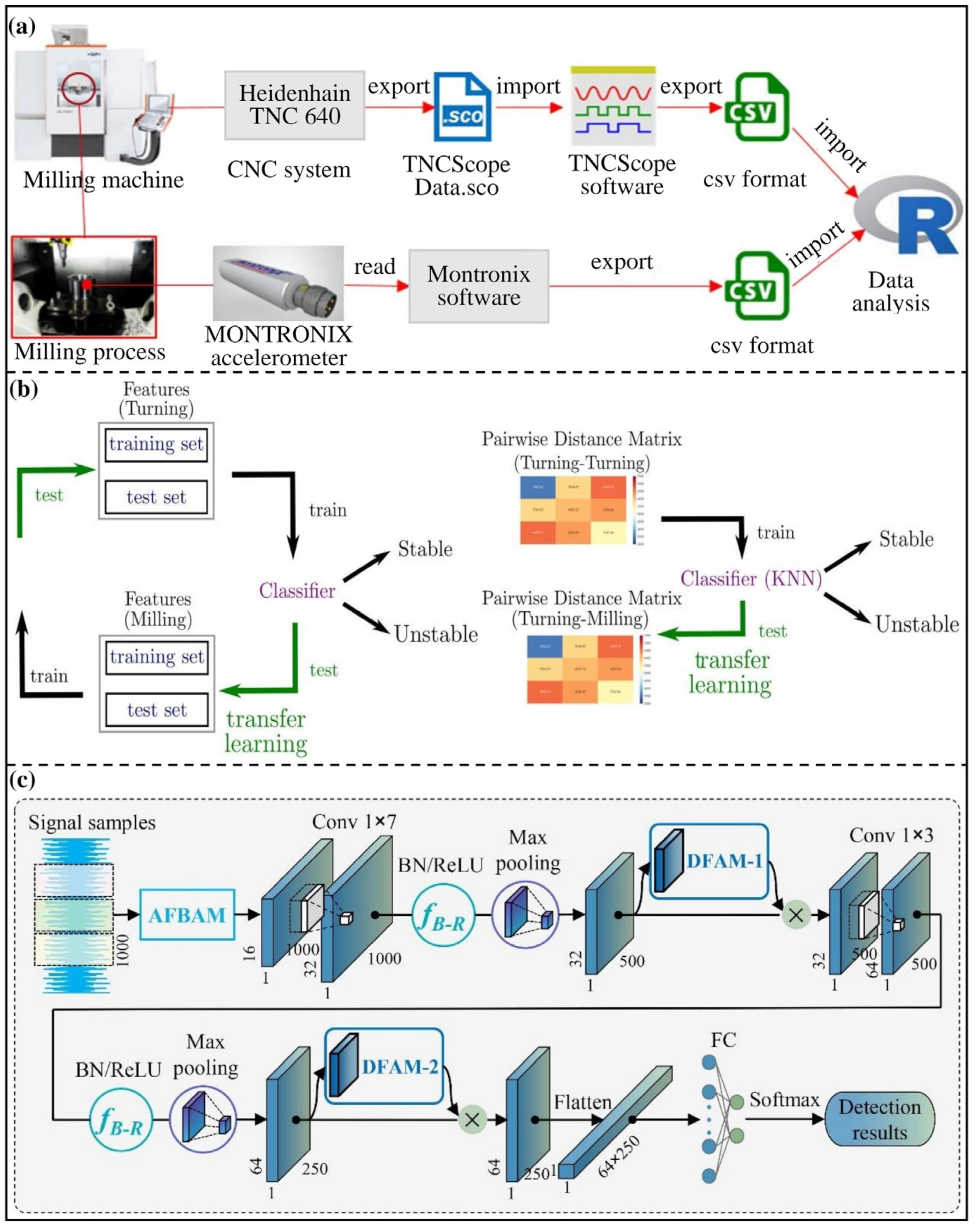
2.3. Temperature Monitoring
3. Intelligent Machining Processes
3.1. Error Identification and Compensation
3.2. Tool Wear Monitoring
3.3. Dynamic Balance Adjustment
3.4. Tool Setting
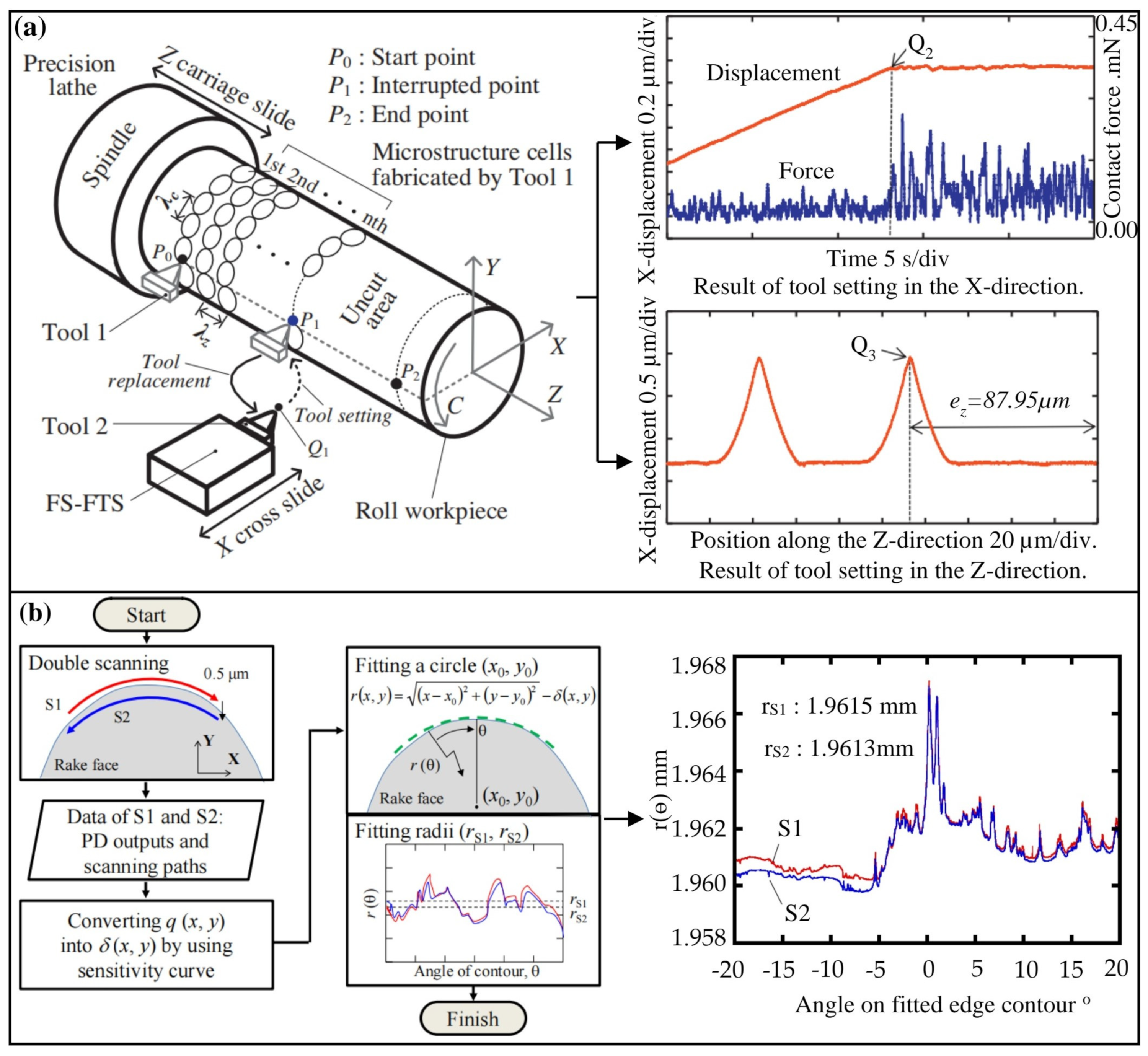
3.5. Assisted Machining
4. Intelligent Machining System
5. Intelligent System Architecture
5.1. Machine System
5.2. Process System
5.3. Control System
6. Summary and Outlook
Author Contributions
Funding
Institutional Review Board Statement
Informed Consent Statement
Data Availability Statement
Conflicts of Interest
References
- Hatefi, S.; Abou-El-Hossein, K. Review of single-point diamond turning process in terms of ultra-precision optical surface roughness. Int. J. Adv. Manuf. Technol. 2019, 106, 2167–2187. [Google Scholar] [CrossRef]
- Hatefi, S.; Abou-El-Hossein, K. Review of magnetic-assisted single-point diamond turning for ultra-high-precision optical component manufacturing. Int. J. Adv. Manuf. Technol. 2022, 120, 1591–1607. [Google Scholar] [CrossRef]
- Chen, Q.; Hu, X.; Lin, M.; Zhang, T.; Zhou, Z. Development Status and Trend of Ultra-precision Machine Tools. Tool Eng. 2023, 57, 3–9. (In Chinese) [Google Scholar]
- Yuan, J.; Zhang, F.; Dai, Y.; Kang, R.; Yang, H.; Lv, B. Development Research of Science and Technologies in Ultra-precision Machining Field. J. Mech. Eng. 2010, 46, 161–177. (In Chinese) [Google Scholar] [CrossRef]
- Li, S.Y.; Dai, Y.F.; Peng, X.Q. Ultra-precision Machine Tools and Development of the Latest Technology. J. Natl. Univ. Def. Technol. 2000, 2, 95–100. (In Chinese) [Google Scholar]
- Wang, G.; Li, S.; Dai, Y. Design Method and Accuracy Analysis of Aspherical Optical Compound Machine Tool. China Mech. Eng. 2004, 2, 7–10. (In Chinese) [Google Scholar] [CrossRef]
- Evans, C.J. Precision engineering: An evolutionary perspective. Philos. Trans. R. Soc. A Math. Phys. Eng. Sci. 2012, 370, 3835–3851. [Google Scholar] [CrossRef]
- Lucca, D.A.; Klopfstein, M.J.; Riemer, O. Ultra-Precision Machining: Cutting With Diamond Tools. J. Manuf. Sci. Eng. 2020, 142, 110817. [Google Scholar] [CrossRef]
- Liang, Y.; Chen, G.; Sun, Y.; Chen, J.; Chen, W.; Yu, N. Research status and outlook of ultra-precision machine tool. J. Harbin Inst. Technol. 2014, 46, 28–39. (In Chinese) [Google Scholar]
- Li, G.; Bao, Y.; Wang, H.; Dong, Z.; Guo, X.; Kang, R. An online monitoring methodology for grinding state identification based on real-time signal of CNC grinding machine. Mech. Syst. Signal Process. 2023, 200, 110540. [Google Scholar] [CrossRef]
- Hu, S.; Liu, F.; He, Y.; Hu, T. An on-line approach for energy efficiency monitoring of machine tools. J. Clean. Prod. 2012, 27, 133–140. [Google Scholar] [CrossRef]
- O’Driscoll, E.; Kelly, K.; O’Donnell, G.E. Intelligent energy based status identification as a platform for improvement of machine tool efficiency and effectiveness. J. Clean. Prod. 2015, 105, 184–195. [Google Scholar] [CrossRef]
- Selvaraj, V.; Xu, Z.; Min, S. Intelligent Operation Monitoring of an Ultra-Precision CNC Machine Tool Using Energy Data. Int. J. Precis. Eng. Manuf.-Green Technol. 2022, 10, 59–69. [Google Scholar] [CrossRef]
- Shi, R.B.; Guo, Z.P.; Song, Z.Y. Research of On-Line Monitoring Technology of Machining Accuracy of CNC Machine Tools. Adv. Mater. Res. 2013, 846–847, 268–273. [Google Scholar] [CrossRef]
- Li, X.H.; Li, W.Y. The Research on Intelligent Monitoring Technology of NC Machining Process. Procedia CIRP 2016, 56, 556–560. [Google Scholar] [CrossRef]
- Liu, C.; Xu, X. Cyber-physical Machine Tool—The Era of Machine Tool 4.0. Procedia CIRP 2017, 63, 70–75. [Google Scholar] [CrossRef]
- Yang, Y.; Yin, C.; Li, X.-b.; Li, L. Multi-source Information Intelligent Collection and Monitoring of CNC Machine Tools Based on Multi-agent. In Challenges and Opportunity with Big Data; Springer: Cham, Switzerland, 2017; pp. 111–121. [Google Scholar]
- Zhang, B.; Shin, Y.C. A multimodal intelligent monitoring system for turning processes. J. Manuf. Process. 2018, 35, 547–558. [Google Scholar] [CrossRef]
- Dai, Y.; Jiang, J.; Zhang, G.; Luo, T. Forced-based tool deviation induced form error identification in single-point diamond turning of optical spherical surfaces. Precis. Eng. 2021, 72, 83–94. [Google Scholar] [CrossRef]
- Zhang, X.; Han, C.; Luo, M.; Zhang, D. Tool Wear Monitoring for Complex Part Milling Based on Deep Learning. Appl. Sci. 2020, 10, 6916. [Google Scholar] [CrossRef]
- Wang, Z.; Li, D.; Wang, Z.; Liu, A.; Tao, R.; Giannopoulos, G.I. Research on Dynamic Balance of Spindle Rotor System Based on Particle Swarm Optimization. Adv. Mater. Sci. Eng. 2021, 2021, 9728248. [Google Scholar] [CrossRef]
- Jang, S.H.; Shimizu, Y.; Ito, S.; Gao, W. A micro optical probe for edge contour evaluation of diamond cutting tools. J. Sens. Sens. Syst. 2014, 3, 69–76. [Google Scholar] [CrossRef]
- Ni, C.; Zhu, L.; Liu, C.; Yang, Z. Analytical modeling of tool-workpiece contact rate and experimental study in ultrasonic vibration-assisted milling of Ti–6Al–4V. Int. J. Mech. Sci. 2018, 142–143, 97–111. [Google Scholar] [CrossRef]
- Kounta, C.A.K.A.; Arnaud, L.; Kamsu-Foguem, B.; Tangara, F. Deep learning for the detection of machining vibration chatter. Adv. Eng. Softw. 2023, 180, 103445. [Google Scholar] [CrossRef]
- Yashiro, T.; Ogawa, T.; Sasahara, H. Temperature measurement of cutting tool and machined surface layer in milling of CFRP. Int. J. Mach. Tools Manuf. 2013, 70, 63–69. [Google Scholar] [CrossRef]
- Ma, S.; Zhang, G.; Wang, J.; Wen, Y.; Han, J.; Wang, H. An on-line identification method of tool-below-center error in single-point diamond turning. J. Manuf. Process. 2022, 79, 154–165. [Google Scholar] [CrossRef]
- Li, Z.; Liu, X.; Incecik, A.; Gupta, M.K.; Królczyk, G.M.; Gardoni, P. A novel ensemble deep learning model for cutting tool wear monitoring using audio sensors. J. Manuf. Process. 2022, 79, 233–249. [Google Scholar] [CrossRef]
- Deepthikumar, M.B.; Sekhar, A.S.; Srikanthan, M.R. Modal balancing of flexible rotors with bow and distributed unbalance. J. Sound Vib. 2013, 332, 6216–6233. [Google Scholar] [CrossRef]
- Li, H.; Shin, Y.C. Analysis of bearing configuration effects on high speed spindles using an integrated dynamic thermo-mechanical spindle model. Int. J. Mach. Tools Manuf. 2004, 44, 347–364. [Google Scholar] [CrossRef]
- Sharan, A.M.; Rao, J.S. Unbalance response of rotor disks supported by fluid film bearings with a negative cross coupled stiffness using influence coefficient method. Mech. Mach. Theory 1985, 20, 415–426. [Google Scholar] [CrossRef]
- Zeng, T.; Li, C.; Liu, Q.; Chen, X. Tracking with nonlinear measurement model by coordinate rotation transformation. Sci. China Technol. Sci. 2014, 57, 2396–2406. [Google Scholar] [CrossRef]
- Zhang, L.; Liu, J.; Ma, C.; Gui, H. Intelligent integrated framework towards high-accuracy machining. Eng. Sci. Technol. Int. J. 2023, 40, 101359. [Google Scholar] [CrossRef]
- Bakhshandeh, P.; Mohammadi, Y.; Altintas, Y.; Bleicher, F. Digital twin assisted intelligent machining process monitoring and control. CIRP J. Manuf. Sci. Technol. 2024, 49, 180–190. [Google Scholar] [CrossRef]
- Fei, T.; Ying, C.; Li Da, X.; Lin, Z.; Bo Hu, L. CCIoT-CMfg: Cloud Computing and Internet of Things-Based Cloud Manufacturing Service System. IEEE Trans. Ind. Inform. 2014, 10, 1435–1442. [Google Scholar]
- Unver, H.O.; Sener, B. Exploring the Potential of Transfer Learning for Chatter Detection. Procedia Comput. Sci. 2022, 200, 151–159. [Google Scholar] [CrossRef]
- Kesriklioglu, S.; Pfefferkorn, F.E. Real time temperature measurement with embedded thin-film thermocouples in milling. Procedia CIRP 2018, 77, 618–621. [Google Scholar] [CrossRef]
- Nasir, V.; Cool, J.; Sassani, F. Intelligent Machining Monitoring Using Sound Signal Processed With the Wavelet Method and a Self-Organizing Neural Network. IEEE Robot. Autom. Lett. 2019, 4, 3449–3456. [Google Scholar] [CrossRef]
- Zhong, R.Y.; Xu, X.; Klotz, E.; Newman, S.T. Intelligent Manufacturing in the Context of Industry 4.0: A Review. Engineering 2017, 3, 616–630. [Google Scholar] [CrossRef]
- Bleicher, F.; Biermann, D.; Drossel, W.G.; Moehring, H.C.; Altintas, Y. Sensor and actuator integrated tooling systems. CIRP Ann. 2023, 72, 673–696. [Google Scholar] [CrossRef]
- Zou, X.; Li, Z.; Zhao, X.; Sun, T.; Zhang, K. Study on the auto-leveling adjustment vibration isolation system for the ultra-precision machine tool. In Proceedings of the 7th International Symposium on Advanced Optical Manufacturing and Testing Technologies: Advanced Optical Manufacturing Technologies, Harbin, China, 26–29 April 2014; Yang, L., Ruch, E., Li, S., Eds.; Volume 9281. 92812L. [Google Scholar]
- Law, M.; Wabner, M.; Colditz, A.; Kolouch, M.; Noack, S.; Ihlenfeldt, S. Active vibration isolation of machine tools using an electro-hydraulic actuator. CIRP J. Manuf. Sci. Technol. 2015, 10, 36–48. [Google Scholar] [CrossRef]
- Sajedi Pour, D.; Behbahani, S. Semi-active fuzzy control of machine tool chatter vibration using smart MR dampers. Int. J. Adv. Manuf. Technol. 2015, 83, 421–428. [Google Scholar] [CrossRef]
- Li, D.; Du, H.; Yip, W.S.; Tang, Y.M.; To, S. Online chatter detection for single-point diamond turning based on multidimensional cutting force fusion. Mech. Syst. Signal Process. 2024, 206, 110850. [Google Scholar] [CrossRef]
- Shasheekant, S.A. Analyzing the Vibration Effect of Cutting Tool on Surface Roughness of Turning Work Piece in Lathe Machine. Int. J. Res. Appl. Sci. Eng. Technol. 2021, 9, 1654–1657. [Google Scholar] [CrossRef]
- Zhang, D.; Ince, M.A.; Asiltürk, İ.; Zi, B.; Cui, G.; Ding, H. Effects of Cutting Tool Parameters on Vibration. MATEC Web Conf. 2016, 77, 07006. [Google Scholar]
- Zheng, Y.; Lin, H.; Deng, Q.; Yang, W.; Su, X. Machine Tool Vibration Fault Monitoring System Based on Internet of Things. In Advances in Wireless Sensor Networks; Springer: Berlin/Heidelberg, Germany, 2015; pp. 533–547. [Google Scholar]
- Liang, Q.; Yan, X.; Liao, X.; Cao, S.; Lu, S.; Zheng, X.; Zhang, Y. Integrated active sensor system for real time vibration monitoring. Sci. Rep. 2015, 5, 16063. [Google Scholar] [CrossRef] [PubMed]
- Bahr, B.; Motavalli, S.; Arfi, T. Sensor fusion for monitoring machine tool conditions. Int. J. Comput. Integr. Manuf. 1997, 10, 314–323. [Google Scholar] [CrossRef]
- Tang, J.; Dong, T.; Li, L.; Shao, L. Intelligent Monitoring System Based on Internet of Things. Wirel. Pers. Commun. 2018, 102, 1521–1537. [Google Scholar] [CrossRef]
- Zhang, L.; Zhou, L.; Ren, L.; Laili, Y. Modeling and simulation in intelligent manufacturing. Comput. Ind. 2019, 112, 103123. [Google Scholar] [CrossRef]
- Stavropoulos, P.; Chantzis, D.; Doukas, C.; Papacharalampopoulos, A.; Chryssolouris, G. Monitoring and Control of Manufacturing Processes: A Review. Procedia CIRP 2013, 8, 421–425. [Google Scholar] [CrossRef]
- Tsai, J.-M.; Sun, I.C.; Chen, K.-S. Realization and performance evaluation of a machine tool vibration monitoring module by multiple MEMS accelerometer integrations. Int. J. Adv. Manuf. Technol. 2021, 114, 465–479. [Google Scholar] [CrossRef]
- Zheng, X.; Arrazola, P.; Perez, R.; Echebarria, D.; Kiritsis, D.; Aristimuño, P.; Sáez-de-Buruaga, M. Exploring the effectiveness of using internal CNC system signals for chatter detection in milling process. Mech. Syst. Signal Process. 2023, 185, 109812. [Google Scholar] [CrossRef]
- Yesilli, M.C.; Khasawneh, F.A.; Mann, B.P. Transfer learning for autonomous chatter detection in machining. J. Manuf. Process. 2022, 80, 109812. [Google Scholar] [CrossRef]
- Lu, Y.; Ma, H.; Sun, Y.; Song, Q.; Liu, Z.; Xiong, Z. An interpretable anti-noise convolutional neural network for online chatter detection in thin-walled parts milling. Mech. Syst. Signal Process. 2024, 206, 110885. [Google Scholar] [CrossRef]
- Moriwaki, T.; Horiuchi, A.; Okuda, K. Effect of Cutting Heat on Machining Accuracy in Ultra-Precision Diamond Turning. CIRP Ann. 1990, 39, 81–84. [Google Scholar] [CrossRef]
- Liang, Y.; Su, H.; Lu, L.; Chen, W.; Sun, Y.; Zhang, P. Thermal optimization of an ultra-precision machine tool by the thermal displacement decomposition and counteraction method. Int. J. Adv. Manuf. Technol. 2014, 76, 635–645. [Google Scholar] [CrossRef]
- Sorrentino, L.; Turchetta, S.; Bellini, C. In process monitoring of cutting temperature during the drilling of FRP laminate. Compos. Struct. 2017, 168, 549–561. [Google Scholar] [CrossRef]
- Quan, Y.M.; Zhao, J.; Le, Y.S. Real-Time Monitoring System of Cutting Process Based on Cutting Temperature. Key Eng. Mater. 2008, 392–394, 946–950. [Google Scholar] [CrossRef]
- Li, J.; Tao, B.; Huang, S.; Yin, Z. Built-in thin film thermocouples in surface textures of cemented carbide tools for cutting temperature measurement. Sens. Actuators A Phys. 2018, 279, 663–670. [Google Scholar] [CrossRef]
- Inţă, M.; Muntean, A. Integrated System for Monitoring the Tool State Using Temperature Measuring by Natural Thermocouple Method. Adv. Mater. Res. 2014, 1036, 274–279. [Google Scholar] [CrossRef]
- Reddy, T.N.; Shanmugaraj, V.; Prakash, V.; Krishna, S.G.; Narendranath, S.; Kumar, P.V.S. Real-time Thermal Error Compensation Module for Intelligent Ultra Precision Turning Machine (iUPTM). Procedia Mater. Sci. 2014, 6, 1981–1988. [Google Scholar] [CrossRef]
- M’Saoubi, R.; Axinte, D.; Soo, S.L.; Nobel, C.; Attia, H.; Kappmeyer, G.; Engin, S.; Sim, W.M. High performance cutting of advanced aerospace alloys and composite materials. CIRP Ann. 2015, 64, 557–580. [Google Scholar] [CrossRef]
- Wu, X.; Zhou, Y.; Fang, C.; Zhu, L.; Jiang, F.; Sun, K.; Li, Y.; Lin, Y. Experimental Investigation on the Machinability Improvement in Magnetic-Field-Assisted Turning of Single-Crystal Copper. Micromachines 2022, 13, 2147. [Google Scholar] [CrossRef] [PubMed]
- Yamasaki, H. Sensors and intelligent sensing systems. IFAC Proc. Vol. 1991, 24, 349–353. [Google Scholar] [CrossRef]
- Ünver, H.Ö.; Özbayoğlu, A.M.; Söyleyici, C.; Çelik, B.B. Artificial intelligence for machining process monitoring. In Artificial Intelligence in Manufacturing; Academic Press: Cambridge, MA, USA, 2024; pp. 307–350. [Google Scholar]
- Zhang, G.; Dai, Y.; Lai, Z. A novel force-based two-dimensional tool centre error identification method in single-point diamond turning. Precis. Eng. 2021, 70, 92–109. [Google Scholar] [CrossRef]
- Zhang, L.; Guo, X.; Wang, D.; Xu, W.; Liu, J.; Huang, S.; Yin, S. In-situ measurement and compensation machining for ultra-precision cutting of optical aspheres. Diam. Abras. Eng. 2022, 42, 18–22. (In Chinese) [Google Scholar]
- He, C.L.; Zong, W.J.; Xue, C.X.; Sun, T. An accurate 3D surface topography model for single-point diamond turning. Int. J. Mach. Tools Manuf. 2018, 134, 42–68. [Google Scholar] [CrossRef]
- Huang, C.-Y.; Liang, R. Modeling of surface topography in single-point diamond turning machine. Appl. Opt. 2015, 54, 6979–6985. [Google Scholar] [CrossRef] [PubMed]
- Dai, Y.; Zhang, G.; Luo, T.; Luo, Q. Centre cone generation and its force performance in single-point diamond turning. Int. J. Mech. Sci. 2020, 184, 105780. [Google Scholar] [CrossRef]
- Zhang, G.; Dai, Y.; To, S.; Wu, X.; Lou, Y. Tool interference at workpiece centre in single-point diamond turning. Int. J. Mech. Sci. 2019, 151, 1–12. [Google Scholar] [CrossRef]
- Kono, D.; Matsubara, A.; Yamaji, I.; Fujita, T. High-precision machining by measurement and compensation of motion error. Int. J. Mach. Tools Manuf. 2008, 48, 1103–1110. [Google Scholar] [CrossRef]
- Gu, J.; Agapiou, S.J.; Kurgin, S. Global Offset Compensation for CNC Machine Tools Based on Workpiece Errors. Procedia Manuf. 2016, 5, 442–454. [Google Scholar] [CrossRef]
- Yu, H.; Qin, S.; Ding, G.; Jiang, L.; Han, L. Integration of tool error identification and machining accuracy prediction into machining compensation in flank milling. Int. J. Adv. Manuf. Technol. 2019, 102, 3121–3134. [Google Scholar] [CrossRef]
- Kong, L.B.; Cheung, C.F.; To, S.; Lee, W.B.; Du, J.J.; Zhang, Z.J. A kinematics and experimental analysis of form error compensation in ultra-precision machining. Int. J. Mach. Tools Manuf. 2008, 48, 1408–1419. [Google Scholar] [CrossRef]
- Lee, J.H.; Liu, Y.; Yang, S.-H. Accuracy improvement of miniaturized machine tool: Geometric error modeling and compensation. Int. J. Mach. Tools Manuf. 2006, 46, 1508–1516. [Google Scholar] [CrossRef]
- Wu, L.; Liu, H.; Zong, W. Analysis and compensation for the dominant tool error in ultra-precision diamond ball-end milling. J. Mater. Process. Technol. 2023, 318, 118034. [Google Scholar] [CrossRef]
- Liu, X.; Zhang, X.; Fang, F.; Liu, S. Identification and compensation of main machining errors on surface form accuracy in ultra-precision diamond turning. Int. J. Mach. Tools Manuf. 2016, 105, 45–57. [Google Scholar] [CrossRef]
- Lai, X.; Ding, K.; Zhang, K.; Huang, F.; Zheng, Q.; Li, Z.; Ding, G. Improved Interpretable-based Physically Guided Spatial Attention for Cross-process Parameters End Milling Cutter Wear Identification. J. Mech. Eng. 2024, 60, 147–157. (In Chinese) [Google Scholar]
- Yan, S.; Sui, L.; Wang, S.; Sun, Y. On-line tool wear monitoring under variable milling conditions based on a condition-adaptive hidden semi-Markov model (CAHSMM). Mech. Syst. Signal Process. 2023, 200, 110644. [Google Scholar] [CrossRef]
- Scheffer, C.; Heyns, P.S. Wear Monitoring in Turning Operations Using Vibration and Strain Measurements. Mech. Syst. Signal Process. 2001, 15, 1185–1202. [Google Scholar] [CrossRef]
- Twardowski, P.; Czyżycki, J.; Felusiak-Czyryca, A.; Tabaszewski, M.; Wiciak-Pikuła, M. Monitoring and forecasting of tool wear based on measurements of vibration accelerations during cast iron milling. J. Manuf. Process. 2023, 95, 342–350. [Google Scholar] [CrossRef]
- Diniz, A.E.; Liu, J.J.; Dornfeld, D.A. Correlating tool life, tool wear and surface roughness by monitoring acoustic emission in finish turning. Wear 1992, 152, 395–407. [Google Scholar] [CrossRef]
- Teti, R.; Micheletti, G.F. Tool Wear Monitoring Through Acoustic Emission. CIRP Ann. 1989, 38, 99–102. [Google Scholar] [CrossRef]
- Choi, I.-H.; Kim, J.-D. Development of monitoring system on the diamond tool wear. Int. J. Mach. Tools Manuf. 1999, 39, 505–515. [Google Scholar] [CrossRef]
- Ko, T.J.; Cho, D.W.; Lee, J.M. Fuzzy Pattern Recognition for Tool Wear Monitoring in Diamond Turning. CIRP Ann. 1992, 41, 125–128. [Google Scholar] [CrossRef]
- Jose, B.; Nikita, K.; Patil, T.; Hemakumar, S.; Kuppan, P. Online Monitoring of Tool Wear and Surface Roughness by using Acoustic and Force Sensors. Mater. Today Proc. 2018, 5, 8299–8306. [Google Scholar] [CrossRef]
- Sick, B. On-Line and Indirect Tool Wear Monitoring in Turning with Artificial Neural Networks: A Review of More Than a Decade of Research. Mech. Syst. Signal Process. 2002, 16, 487–546. [Google Scholar] [CrossRef]
- Wu, L.; Sha, K.; Tao, Y.; Ju, B.; Chen, Y. A Hybrid Deep Learning Model as the Digital Twin of Ultra-Precision Diamond Cutting for In-Process Prediction of Cutting-Tool Wear. Appl. Sci. 2023, 13, 6675. [Google Scholar] [CrossRef]
- Liu, X.; Liu, S.; Li, X.; Zhang, B.; Yue, C.; Liang, S.Y. Intelligent tool wear monitoring based on parallel residual and stacked bidirectional long short-term memory network. J. Manuf. Syst. 2021, 60, 608–619. [Google Scholar] [CrossRef]
- Tran, M.-Q.; Doan, H.-P.; Vu, V.Q.; Vu, L.T. Machine learning and IoT-based approach for tool condition monitoring: A review and future prospects. Measurement 2023, 207, 112351. [Google Scholar] [CrossRef]
- Wang, G.; Cui, Y. On line tool wear monitoring based on auto associative neural network. J. Intell. Manuf. 2012, 24, 1085–1094. [Google Scholar] [CrossRef]
- Sick, B. On-Line Tool Wear Monitoring in Turning Using Neural Networks. Neural Comput. Appl. 1998, 7, 356–366. [Google Scholar] [CrossRef]
- Choudhury, S.K.; Jain, V.K.; Rama Rao, C.V.V. On-line monitoring of tool wear in turning using a neural network. Int. J. Mach. Tools Manuf. 1999, 39, 489–504. [Google Scholar] [CrossRef]
- Ezugwu, E.O.; Arthur, S.J.; Hines, E.L. Tool-wear prediction using artificial neural networks. J. Mater. Process. Technol. 1995, 49, 255–264. [Google Scholar] [CrossRef]
- Kuo, R.J. Multi-sensor integration for on-line tool wear estimation through artificial neural networks and fuzzy neural network. Eng. Appl. Artif. Intell. 2000, 13, 249–261. [Google Scholar] [CrossRef]
- He, Z.; Shi, T.; Xuan, J.; Li, T. Research on tool wear prediction based on temperature signals and deep learning. Wear 2021, 478–479, 203902. [Google Scholar] [CrossRef]
- Cao, M.; Zhen, K. Multi-Sensor Tool Tear Yonitoring Combined with Temporal and Spatial Characteristics. Modul. Mach. Tool Autom. Manuf. Tech. 2024, 2, 125–129. (In Chinese) [Google Scholar]
- Zhu, K.; Guo, H.; Li, S.; Lin, X. Physics-Informed Deep Learning for Tool Wear Monitoring. IEEE Trans. Ind. Inform. 2024, 20, 524–533. [Google Scholar] [CrossRef]
- Gouarir, A.; Martínez-Arellano, G.; Terrazas, G.; Benardos, P.; Ratchev, S. In-process Tool Wear Prediction System Based on Machine Learning Techniques and Force Analysis. Procedia CIRP 2018, 77, 501–504. [Google Scholar] [CrossRef]
- Manivannan, R.; Rajasekar, R.; Maheswaran, M.K. A review on online continuous tool wear monitoring system for machining process. Recent Trends Sci. Eng. 2022, 2393, 020207. [Google Scholar]
- Zhan, W.; Bo, Z.; Ke, z. Optimization of online dynamic balancing quality compensation strategy for spindle system. J. Vib. Meas. Diagn. 2021, 41, 164–169+206. (In Chinese) [Google Scholar]
- Wu, Q.; Sun, Y.; Chen, W.; Chen, G. Theoretical and experimental investigation of spindle axial drift and its effect on surface topography in ultra-precision diamond turning. Int. J. Mach. Tools Manuf. 2017, 116, 107–113. [Google Scholar] [CrossRef]
- Xul, J.; Zheng, X.; Zhang, J.; Liu, X. Vibration Characteristics of Unbalance Response for Motorized Spindle System. Procedia Eng. 2017, 174, 331–340. [Google Scholar] [CrossRef]
- Wang, Z.; Zhu, F.L. Analysis on High-Speed Spindle Online Dynamic Balancing Regulation Characteristics. Appl. Mech. Mater. 2017, 868, 207–211. [Google Scholar] [CrossRef]
- Sadeghipour, K.; Cowley, A. The receptance sensitivity and the effect of concentrated mass inserts on the modal balance of spindle-bearing systems. Int. J. Mach. Tool Des. Res. 1986, 26, 415–429. [Google Scholar] [CrossRef]
- Yu, Z.; Li, Y.; Liang, Z.; Tang, Z. Development of single measuring point overall balancing method based on multi-cylinder dynamic balance detection system. Comput. Electron. Agric. 2022, 198, 106968. [Google Scholar] [CrossRef]
- Zhang, L.; Zha, J.; Zou, C.; Chen, X.; Chen, Y. A new method for field dynamic balancing of rigid motorized spindles based on real-time position data of CNC machine tools. Int. J. Adv. Manuf. Technol. 2018, 102, 1181–1191. [Google Scholar] [CrossRef]
- Liu, X.; Wei, W.; Yuan, J.; Tao, Y.; Li, Y.; Huang, Y. A High Accuracy Method for the Field Dynamic Balancing of Rigid Spindles in the Ultra-Precision Turning Machine. Int. J. Precis. Eng. Manuf. 2021, 22, 1829–1840. [Google Scholar] [CrossRef]
- Yin, T.; To, S.; Du, H.; Zhang, G. Effects of wheel spindle error motion on surface generation in grinding. Int. J. Mech. Sci. 2022, 218, 107046. [Google Scholar] [CrossRef]
- Wang, Z.; Tu, W. Online Dynamic Balance Detection Method of High Speed Motorized Spindle Based on LabVIEW. Appl. Mech. Mater. 2017, 868, 369–374. [Google Scholar] [CrossRef]
- Zhang, S.H.; Wu, L.S.; Teng, X.B. Research on Double-Face Online Dynamic Balance Technology of Machine Tool Spindle. Appl. Mech. Mater. 2010, 44–47, 112–116. [Google Scholar] [CrossRef]
- Liu, C.; Liu, G. Field Dynamic Balancing for Rigid Rotor-AMB System in a Magnetically Suspended Flywheel. IEEE/ASME Trans. Mechatron. 2016, 21, 1140–1150. [Google Scholar] [CrossRef]
- Yun, X.; Mei, X.; Jiang, G.; Wang, B. A new dynamic balancing method of spindle based on the identification energy transfer coefficient. J. Mech. Sci. Technol. 2019, 33, 4595–4604. [Google Scholar] [CrossRef]
- Zhang, S.; Wang, Y.; Zhang, Z. Online Dynamic Balance Technology for High Speed Spindle Based on Gain Parameter Adaption and Scheduling Control. Appl. Sci. 2018, 8, 917. [Google Scholar] [CrossRef]
- Pian, J.X.; Pu, C.Y.; Wang, Z.; Qi, Y.W. Analysis of Imbalance Calculation Method in Dynamic Balancing Machinery. Appl. Mech. Mater. 2017, 868, 218–223. [Google Scholar] [CrossRef]
- Fan, H.; Wang, J.; Shao, S.; Jing, M.; Liu, H.; Zhang, X. A Corrected Adaptive Balancing Approach of Motorized Spindle Considering Air Gap Unbalance. Appl. Sci. 2020, 10, 2197. [Google Scholar] [CrossRef]
- Wang, Z.; Zhang, B.; Zhang, K.; Yue, G. Optimization and Experiment of Mass Compensation Strategy for Built-In Mechanical On-Line Dynamic Balancing System. Appl. Sci. 2020, 10, 1464. [Google Scholar] [CrossRef]
- Shihai, Z.; Yujun, C. A new double-face online dynamic balance device and its control system for high speed machine tool spindle. J. Vib. Control 2014, 22, 1037–1048. [Google Scholar] [CrossRef]
- Baba, S.; Nakamoto, K.; Takeuchi, Y. Multi-axis control ultraprecision machining based on tool setting errors compensation. Int. J. Autom. Technol. 2016, 10, 114–120. [Google Scholar] [CrossRef]
- Yao, J.T. Research on the Relationship between Tool Setting Error and Turning Accuracy. Appl. Mech. Mater. 2016, 851, 221–225. [Google Scholar] [CrossRef]
- Arizmendi, M.; Fernández, J.; Gil, A.; Veiga, F. Effect of tool setting error on the topography of surfaces machined by peripheral milling. Int. J. Mach. Tools Manuf. 2009, 49, 36–52. [Google Scholar] [CrossRef]
- Gao, W.; Asai, T.; Arai, Y. Precision and fast measurement of 3D cutting edge profiles of single point diamond micro-tools. CIRP Ann. 2009, 58, 451–454. [Google Scholar] [CrossRef]
- Wang, Y.; Zhang, C.; He, Y.; Tao, L.; Feng, H. Development and evaluation of non-contact automatic tool setting method for grinding internal screw threads. Int. J. Adv. Manuf. Technol. 2018, 98, 741–754. [Google Scholar] [CrossRef]
- Zhu, X.L.; Jiao, Z.H.; Kang, R.K.; Wang, Z.G.; Xu, H. A Novel Method for Grinding Wheel Setting Based on Acoustic Emissions. Mater. Sci. Forum 2016, 874, 79–84. [Google Scholar] [CrossRef]
- Min, S.; Lidde, J.; Raue, N.; Dornfeld, D. Acoustic emission based tool contact detection for ultra-precision machining. CIRP Ann. 2011, 60, 141–144. [Google Scholar] [CrossRef]
- Lee, E.S.; Lee, C.H.; Kim, S.C. Machining Accuracy Improvement by Automatic Tool Setting and On Machine Verification. Key Eng. Mater. 2008, 381–382, 199–202. [Google Scholar] [CrossRef]
- Liu, Q.; Zhou, X.; Liu, Z.; Lin, C.; Ma, L. Long-stroke fast tool servo and a tool setting method for freeform optics fabrication. Opt. Eng. 2014, 53, 092005. [Google Scholar] [CrossRef]
- Gao, W.; Chen, Y.-L.; Lee, K.-W.; Noh, Y.-J.; Shimizu, Y.; Ito, S. Precision tool setting for fabrication of a microstructure array. CIRP Ann. 2013, 62, 523–526. [Google Scholar] [CrossRef]
- Wei, X.; Li, B.; Chen, L.; Xin, M.; Liu, B.; Jiang, Z. Tool setting error compensation in large aspherical mirror grinding. Int. J. Adv. Manuf. Technol. 2017, 94, 4093–4103. [Google Scholar] [CrossRef]
- Liu, X.; Zhu, W. Development of a fiber optical occlusion based non-contact automatic tool setter for a micro-milling machine. Robot. Comput.-Integr. Manuf. 2017, 43, 12–17. [Google Scholar] [CrossRef]
- Lu, X.H.; Jia, Z.Y.; Zheng, X.Y.; Yu, X.Y. Realization of Handwheel and Tool Setting of Micro Milling Machine Based on PMAC. Adv. Mater. Res. 2011, 211–212, 978–982. [Google Scholar] [CrossRef]
- Chao, C.L.; Cheng, T.A.; Lou, D.C.; Chao, C.W. Development of a Non-Contact Tool Setting System for Precision Diamond Turning. Mater. Sci. Forum 2006, 505–507, 367–372. [Google Scholar] [CrossRef]
- Liu, Z.; Cheng, X.; Yan, B.; Chen, R. Automatic Measuring System of Machine Tool Based on Machine Vision. Modul. Mach. Tool Autom. Manuf. Tech. 2017, 9, 99–102. (In Chinese) [Google Scholar]
- Jang, S.; Shimizu, Y.; Ito, S.; Gao, W. Development of an optical probe for evaluation of tool edge geometry. J. Adv. Mech. Des. Syst. Manuf. 2014, 8, JAMDSM0063. [Google Scholar] [CrossRef]
- Kibe, Y.; Okada, Y.; Mitsui, K. Machining accuracy for shearing process of thin-sheet metals—Development of initial tool position adjustment system. Int. J. Mach. Tools Manuf. 2007, 47, 1728–1737. [Google Scholar] [CrossRef]
- Doiron, T.D. Computer vision based station for tool setting and tool form measurement. Precis. Eng. 1989, 11, 231–238. [Google Scholar] [CrossRef]
- Zhao, M.; He, N.; Li, L.; Huang, X. Method of precise auto tool setting for micro milling. Trans. Tianjin Univ. 2011, 17, 284–287. [Google Scholar] [CrossRef]
- Shimizu, Y.; Jang, S.; Gao, W. Design and testing of an optical configuration for multi-dimensional measurement of a diamond cutting tool. Measurement 2016, 94, 934–941. [Google Scholar] [CrossRef]
- Bono, M.J.; Kroll, J.J. Tool setting on a B-axis rotary table of a precision lathe. Int. J. Mach. Tools Manuf. 2008, 48, 1261–1267. [Google Scholar] [CrossRef]
- Bono, M.J.; Seugling, R.M.; Kroll, J.J.; Nederbragt, W.W. An uncertainty analysis of tool setting methods for a precision lathe with a B-axis rotary table. Precis. Eng. 2010, 34, 242–252. [Google Scholar] [CrossRef]
- Pei, L.; Shi, G.; Chen, J.; Yao, D.; Yang, Y.; Li, J. Simulation and experiment of ultrasound-assisted grinding process for natural diamonds. Diam. Abras. Eng. 2023, 43, 720–726. (In Chinese) [Google Scholar]
- Brehl, D.E.; Dow, T.A. Review of vibration-assisted machining. Precis. Eng. 2008, 32, 153–172. [Google Scholar] [CrossRef]
- Zhao, B. Introduction to the current research status and development direction of ultrasonic machining technology. Diam. Abras. Eng. 2020, 40, 1–4. (In Chinese) [Google Scholar]
- Gaidys, R.; Dambon, O.; Ostasevicius, V.; Dicke, C.; Narijauskaite, B. Ultrasonic tooling system design and development for single point diamond turning (SPDT) of ferrous metals. Int. J. Adv. Manuf. Technol. 2017, 93, 2841–2854. [Google Scholar] [CrossRef]
- Moriwaki, T.; Shamoto, E. Ultraprecision Diamond Turning of Stainless Steel by Applying Ultrasonic Vibration. CIRP Ann. 1991, 40, 559–562. [Google Scholar] [CrossRef]
- Li, Z.; Jin, G.; Fang, F.; Gong, H.; Jia, H. Ultrasonically Assisted Single Point Diamond Turning of Optical Mold of Tungsten Carbide. Micromachines 2018, 9, 77. [Google Scholar] [CrossRef] [PubMed]
- Bulla, B.; Klocke, F.; Dambon, O.; Hünten, M. Ultrasonic Assisted Diamond Turning of Hardened Steel for Mould Manufacturing. Key Eng. Mater. 2012, 516, 437–442. [Google Scholar] [CrossRef]
- Kitzig-Frank, H.; Tawakoli, T.; Azarhoushang, B. Material removal mechanism in ultrasonic-assisted grinding of Al2O3 by single-grain scratch test. Int. J. Adv. Manuf. Technol. 2017, 91, 2949–2962. [Google Scholar] [CrossRef]
- Celaya, A.; De Lacalle, L.N.L.; Campa, F.J.; Lamikiz, A. Ultrasonic Assisted Turning of mild steels. Int. J. Mater. Prod. Technol. 2010, 37, 60–70. [Google Scholar] [CrossRef]
- Yang, Z.; Zhu, L.; Zhang, G.; Ni, C.; Lin, B. Review of ultrasonic vibration-assisted machining in advanced materials. Int. J. Mach. Tools Manuf. 2020, 156, 103594. [Google Scholar] [CrossRef]
- Liu, X.; Wu, D.; Zhang, J.; Hu, X.; Cui, P. Analysis of surface texturing in radial ultrasonic vibration-assisted turning. J. Mater. Process. Technol. 2019, 267, 186–195. [Google Scholar] [CrossRef]
- Xu, S.; Shimada, K.; Mizutani, M.; Kuriyagawa, T. Fabrication of hybrid micro/nano-textured surfaces using rotary ultrasonic machining with one-point diamond tool. Int. J. Mach. Tools Manuf. 2014, 86, 12–17. [Google Scholar] [CrossRef]
- Jeon, Y.; Lee, C.M. Current research trend on laser assisted machining. Int. J. Precis. Eng. Manuf. 2012, 13, 311–317. [Google Scholar] [CrossRef]
- Peruri, S.R.; Chaganti, P.K. A review of magnetic-assisted machining processes. J. Braz. Soc. Mech. Sci. Eng. 2019, 41, 450. [Google Scholar] [CrossRef]
- You, K.; Liu, G.; Wang, W.; Fang, F. Laser assisted diamond turning of silicon freeform surface. J. Mater. Process. Technol. 2023, 322, 118172. [Google Scholar] [CrossRef]
- Brecher, C.; Emonts, M.; Rosen, C.-J.; Hermani, J.-P. Laser-assisted Milling of Advanced Materials. Phys. Procedia 2011, 12, 599–606. [Google Scholar] [CrossRef]
- Yip, W.S.; To, S. Sustainable manufacturing of ultra-precision machining of titanium alloys using a magnetic field and its sustainability assessment. Sustain. Mater. Technol. 2018, 16, 38–46. [Google Scholar] [CrossRef]
- Benet, G.; Albaladejo, J.; Rodas, A.; Gil, P.J. An Intelligent Ultrasonic Sensor for Ranging in an Industrial Distributed Control System. IFAC Proc. Vol. 1992, 25, 299–303. [Google Scholar] [CrossRef]
- Bakalis, P.S.; Ellis, J.E. The Use of Optimisation Algorithms as an Aid for Determining Process Control Configurations. IFAC Proc. Vol. 1995, 28, 333–338. [Google Scholar] [CrossRef]
- Filip, F.G.; Donciulescu, D.A.; Gaşpar, R.; Muratcea, M.; Orǎşanu, L. Multilevel optimization algorithms in computer aided production control in process industry. Comput. Ind. 1985, 6, 47–57. [Google Scholar] [CrossRef]
- Machorro-Cano, I.; Alor-Hernández, G.; Cruz-Ramos, N.A.; Sánchez-Ramírez, C.; Segura-Ozuna, M.G. A Brief Review of IoT Platforms and Applications in Industry. In New Perspectives on Applied Industrial Tools and Techniques; Springer: Cham, Switzerland, 2018; pp. 293–324. [Google Scholar]
- Chen, W. Intelligent manufacturing production line data monitoring system for industrial internet of things. Comput. Commun. 2020, 151, 31–41. [Google Scholar] [CrossRef]
- Shafiq, S.I.; Velez, G.; Toro, C.; Sanin, C.; Szczerbicki, E. Designing Intelligent Factory: Conceptual Framework and Empirical Validation. Procedia Comput. Sci. 2016, 96, 1801–1808. [Google Scholar] [CrossRef]
- Soori, M.; Arezoo, B.; Dastres, R. Internet of things for smart factories in industry 4.0, a review. Internet Things Cyber-Phys. Syst. 2023, 3, 192–204. [Google Scholar] [CrossRef]
- Shi, Z.; Xie, Y.; Xue, W.; Chen, Y.; Fu, L.; Xu, X. Smart factory in Industry 4.0. Syst. Res. Behav. Sci. 2020, 37, 607–617. [Google Scholar] [CrossRef]
- Liu, W.; Kong, C.; Niu, Q.; Jiang, J.; Zhou, X. A method of NC machine tools intelligent monitoring system in smart factories. Robot. Comput.-Integr. Manuf. 2020, 61, 101842. [Google Scholar] [CrossRef]
- Elbasani, E.; Siriporn, P.; Choi, J.S. A Survey on RFID in Industry 4.0. In Internet of Things for Industry 4.0; Springer: Cham, Switzerland, 2020; pp. 1–16. [Google Scholar]
- Guo, Z.X.; Ngai, E.W.T.; Yang, C.; Liang, X. An RFID-based intelligent decision support system architecture for production monitoring and scheduling in a distributed manufacturing environment. Int. J. Prod. Econ. 2015, 159, 16–28. [Google Scholar] [CrossRef]
- Gjeldum, N.; Mladineo, M.; Crnjac, M.; Veza, I.; Aljinovic, A. Performance analysis of the RFID system for optimal design of the intelligent assembly line in the learning factory. Procedia Manuf. 2018, 23, 63–68. [Google Scholar] [CrossRef]
- Zeb, S.; Mahmood, A.; Khowaja, S.A.; Dev, K.; Hassan, S.A.; Gidlund, M.; Bellavista, P. Towards defining industry 5.0 vision with intelligent and softwarized wireless network architectures and services: A survey. J. Netw. Comput. Appl. 2024, 223, 103796. [Google Scholar] [CrossRef]
- Greis, N.P.; Nogueira, M.L.; Schmitz, T.; Dillon, M. Manufacturing-Uber: Intelligent Operator Assignment in a Connected Factory. IFAC-PapersOnLine 2019, 52, 2734–2739. [Google Scholar] [CrossRef]
- Gu, W.; Liu, S.; Zhang, Z.; Li, Y. A distributed physical architecture and data-based scheduling method for smart factory based on intelligent agents. J. Manuf. Syst. 2022, 65, 785–801. [Google Scholar] [CrossRef]
- Zou, W.; Zou, J.; Sang, H.; Meng, L.; Pan, Q. An effective population-based iterated greedy algorithm for solving the multi-AGV scheduling problem with unloading safety detection. Inf. Sci. 2024, 657, 119949. [Google Scholar] [CrossRef]
- Zhang, X.-j.; Sang, H.-y.; Li, J.-q.; Han, Y.-y.; Duan, P. An effective multi-AGVs dispatching method applied to matrix manufacturing workshop. Comput. Ind. Eng. 2022, 163, 107791. [Google Scholar] [CrossRef]
- Javaid, M.; Haleem, A.; Singh, R.P.; Suman, R. Enabling flexible manufacturing system (FMS) through the applications of industry 4.0 technologies. Internet Things Cyber-Phys. Syst. 2022, 2, 49–62. [Google Scholar] [CrossRef]
- Shang, J.; Sueyoshi, T. A unified framework for the selection of a Flexible Manufacturing System. Eur. J. Oper. Res. 1995, 85, 297–315. [Google Scholar] [CrossRef]
- Kimemia, J.; Gershwin, S.B. An Algorithm for the Computer Control of a Flexible Manufacturing System. IIE Trans. 2007, 15, 353–362. [Google Scholar] [CrossRef]
- Shariatzadeh, N.; Lundholm, T.; Lindberg, L.; Sivard, G. Integration of Digital Factory with Smart Factory Based on Internet of Things. Procedia CIRP 2016, 50, 512–517. [Google Scholar] [CrossRef]
- Azevedo, A.; Almeida, A. Factory Templates for Digital Factories Framework. Robot. Comput.-Integr. Manuf. 2011, 27, 755–771. [Google Scholar] [CrossRef]
- Guo, Y.; Wang, N.; Xu, Z.-Y.; Wu, K. The internet of things-based decision support system for information processing in intelligent manufacturing using data mining technology. Mech. Syst. Signal Process. 2020, 142, 106630. [Google Scholar] [CrossRef]
- Jang, H.; Haddoud, M.Y.; Roh, S.; Onjewu, A.-K.E.; Choi, T. Implementing smart factory: A fuzzy-set analysis to uncover successful paths. Technol. Forecast. Soc. Change 2023, 195, 122751. [Google Scholar] [CrossRef]
- Sunny, S.M.N.A.; Liu, X.F.; Shahriar, M.R. Development of machine tool communication method and its edge middleware for cyber-physical manufacturing systems. Int. J. Comput. Integr. Manuf. 2023, 36, 1009–1030. [Google Scholar] [CrossRef]
- Chen, G.; Wang, P.; Feng, B.; Li, Y.; Liu, D. The framework design of smart factory in discrete manufacturing industry based on cyber-physical system. Int. J. Comput. Integr. Manuf. 2019, 33, 79–101. [Google Scholar] [CrossRef]
- Tan, K.K.; Tang, K.Z.; Dou, H.F.; Huang, S.N. Development of an integrated and open-architecture precision motion control system. Control Eng. Pract. 2002, 10, 757–772. [Google Scholar] [CrossRef]
- Shimaponda-Nawa, M.; Nwaila, G.T. Integrated and intelligent remote operation centres (I2ROCs): Assessing the human–machine requirements for 21st century mining operations. Miner. Eng. 2024, 207, 108565. [Google Scholar] [CrossRef]
- Kwan, C.; Xu, R.; Lang, J.; Lin, C.; Stevenson, M.; Lin, Y.; Ren, Z.; Haynes, L.S. Intelligent control of piezoelectric actuators for precision manufacturing. Proc. SPIE-Int. Soc. Opt. Eng. 1999, 3833, 2–11. [Google Scholar]
- Wang, B.; Liang, Y.C.; Dong, S. Study on the Compound Fuzzy Motion Control for the Ultra Precision Machine Tools. Key Eng. Mater. 2006, 315–316, 813–816. [Google Scholar] [CrossRef]
- Zhang, C.; Zhou, G.; Li, J.; Chang, F.; Ding, K.; Ma, D. A multi-access edge computing enabled framework for the construction of a knowledge-sharing intelligent machine tool swarm in Industry 4.0. J. Manuf. Syst. 2023, 66, 56–70. [Google Scholar] [CrossRef]
- Larsen, G.A.; Cetinkunt, S.; Donmez, A. CMAC neural network control for high precision motion control in the presence of large friction. J. Dyn. Syst. Meas. Control.-Trans. ASME 1995, 117, 415–420. [Google Scholar] [CrossRef]
- Jeong, S.H.; Park, J.A. System identification and admittance model-based nanodynamic control of ultra-precision cutting process. KSME Int. J. 1997, 11, 620–628. [Google Scholar] [CrossRef]
- Elmenreich, W. A review on system architectures for sensor fusion applications. In Software Technologies for Embedded and Ubiquitous Systems; Lecture Notes in Computer Science (including subseries Lecture Notes in Artificial Intelligence and Lecture Notes in Bioinformatics); Springer: Berlin/Heidelberg, Germany, 2007; Volume 4761, LNCS; pp. 547–559. [Google Scholar]
- Menesatti, P.; Pallottino, F.; Figorilli, S.; Antonucci, F.; Tomasone, R.; Costa, C. Multi-sensor imaging retrofit system to test precision agriculture machine-based applications. Adv. Anim. Biosci. 2017, 8, 189–192. [Google Scholar] [CrossRef]
- Luo, R.C.; Chang, C.C.; Lai, C.C. Multisensor Fusion and Integration: Theories, Applications, and its Perspectives. IEEE Sens. J. 2011, 11, 3122–3138. [Google Scholar] [CrossRef]
- Caroff, T.; Brulais, S.; Faucon, A.; Boness, A.; Arrizabalaga, A.S.; Ellinger, J. Ultra low power wireless multi-sensor platform dedicated to machine tool condition monitoring. Procedia Manuf. 2020, 51, 296–301. [Google Scholar] [CrossRef]
- Fujishima, M.; Mori, M.; Narimatsu, K.; Irino, N. Utilisation of Iot and Sensing for Machine Tools. J. Mach. Eng. 2019, 19, 38–47. [Google Scholar] [CrossRef]
- Pei, S.; Wu, G.; Tao, F. Design and realization of CNC machine tool management system using Internet of things. Soft Comput. 2022, 26, 10729–10739. [Google Scholar]
- Royo, B.; Xenou, E.; Młodawska, P.; Kirchner, M.; Żuchowski, W.; Ayfantopoulou, G. Evaluation of an IoT network for urban loading and unloading operations in Kalisz. Transp. Res. Procedia 2023, 72, 407–414. [Google Scholar] [CrossRef]
- Wang, J.; Qi, X. Intelligent RGV Dynamic Scheduling Virtual Simulation Technology Based on Machine Learning. Procedia Comput. Sci. 2023, 228, 1077–1085. [Google Scholar] [CrossRef]
- Ali Laghari, R.; Mekid, S. Comprehensive approach toward IIoT based condition monitoring of machining processes. Measurement 2023, 217, 113004. [Google Scholar] [CrossRef]
- Tao, F.; Zhang, M. Digital Twin Shop-Floor: A New Shop-Floor Paradigm Towards Smart Manufacturing. IEEE Access 2017, 5, 20418–20427. [Google Scholar] [CrossRef]
- Esposito, C.; Castiglione, A.; Palmieri, F.; Ficco, M.; Dobre, C.; Iordache, G.V.; Pop, F. Event-based sensor data exchange and fusion in the Internet of Things environments. J. Parallel Distrib. Comput. 2018, 118, 328–343. [Google Scholar] [CrossRef]
- Sung, W.-T.; Tsai, M.-H. Data fusion of multi-sensor for IOT precise measurement based on improved PSO algorithms. Comput. Math. Appl. 2012, 64, 1450–1461. [Google Scholar] [CrossRef]
- Amendola, S.; Occhiuzzi, C.; Manzari, S.; Marrocco, G. RFID-Based Multi-level Sensing Network for Industrial Internet of Things. In New Advances in the Internet of Things; Springer: Cham, Switzerland, 2018; pp. 1–24. [Google Scholar]
- da Silva, A.F.; Ohta, R.L.; dos Santos, M.N.; Binotto, A.P.D. A Cloud-based Architecture for the Internet of Things targeting Industrial Devices Remote Monitoring and Control. IFAC-PapersOnLine 2016, 49, 108–113. [Google Scholar] [CrossRef]
- Malek, Y.N.; Kharbouch, A.; Khoukhi, H.E.; Bakhouya, M.; Florio, V.D.; Ouadghiri, D.E.; Latré, S.; Blondia, C. On the use of IoT and Big Data Technologies for Real-time Monitoring and Data Processing. Procedia Comput. Sci. 2017, 113, 429–434. [Google Scholar] [CrossRef]
- Erasmus, J.; Grefen, P.; Vanderfeesten, I.; Traganos, K. Smart Hybrid Manufacturing Control Using Cloud Computing and the Internet-of-Things. Machines 2018, 6, 62. [Google Scholar] [CrossRef]
- Wang, T.; Li, J.; Kong, Z.; Liu, X.; Snoussi, H.; Lv, H. Digital twin improved via visual question answering for vision-language interactive mode in human–machine collaboration. J. Manuf. Syst. 2021, 58, 261–269. [Google Scholar] [CrossRef]
- Tnay, G.L.; Chia, B.C.L.; Woon, K.S. A smart engineering system toward Machine Shop 4.0. In Reference Module in Materials Science and Materials Engineering; Elsevier: Amsterdam, The Netherlands, 2024; Volume 10, pp. 219–230. [Google Scholar]
- Kadak, U.; Coroianu, L. Integrating multivariate fuzzy neural networks into fuzzy inference system for enhanced decision making. Fuzzy Sets Syst. 2023, 470, 108668. [Google Scholar] [CrossRef]

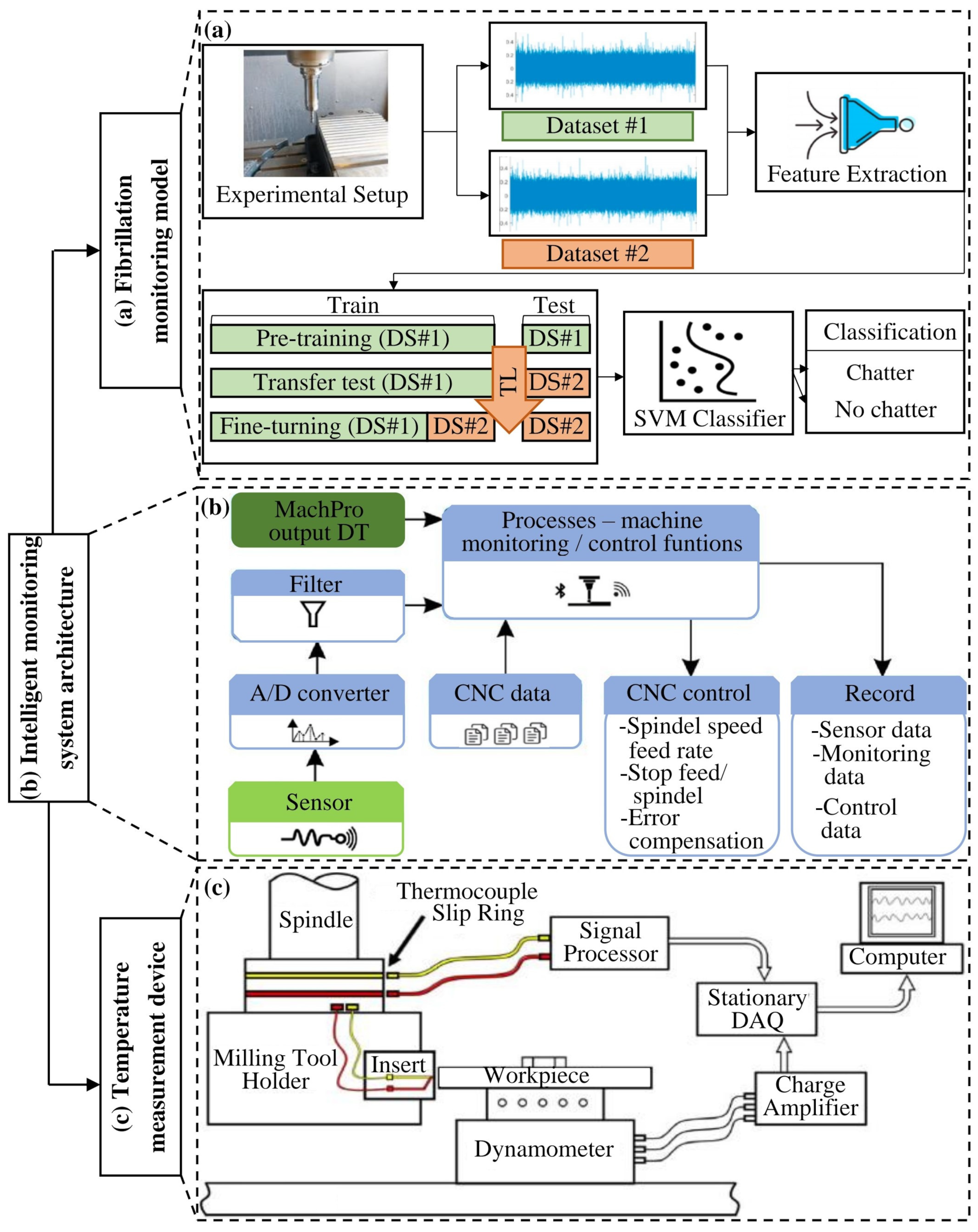
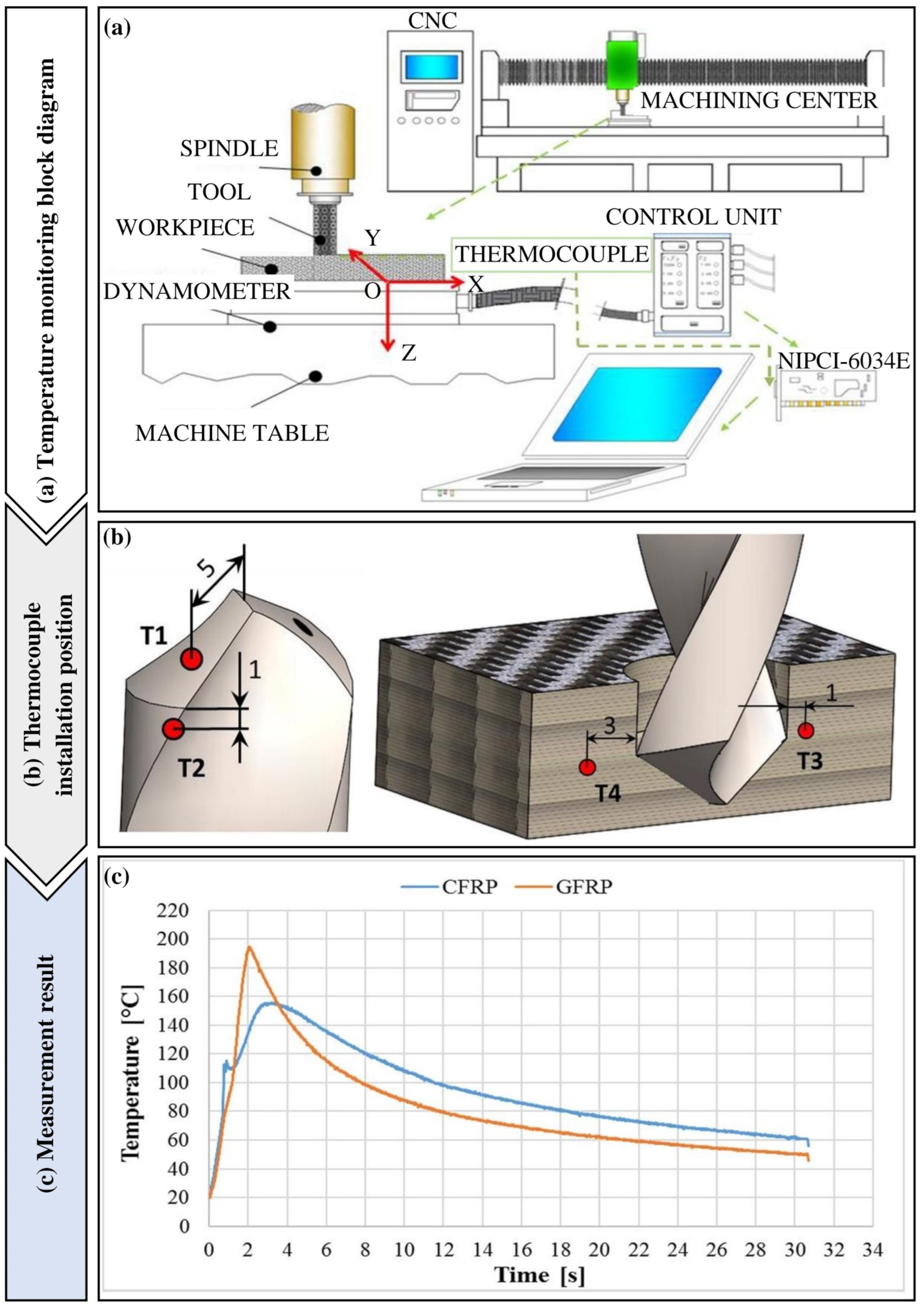

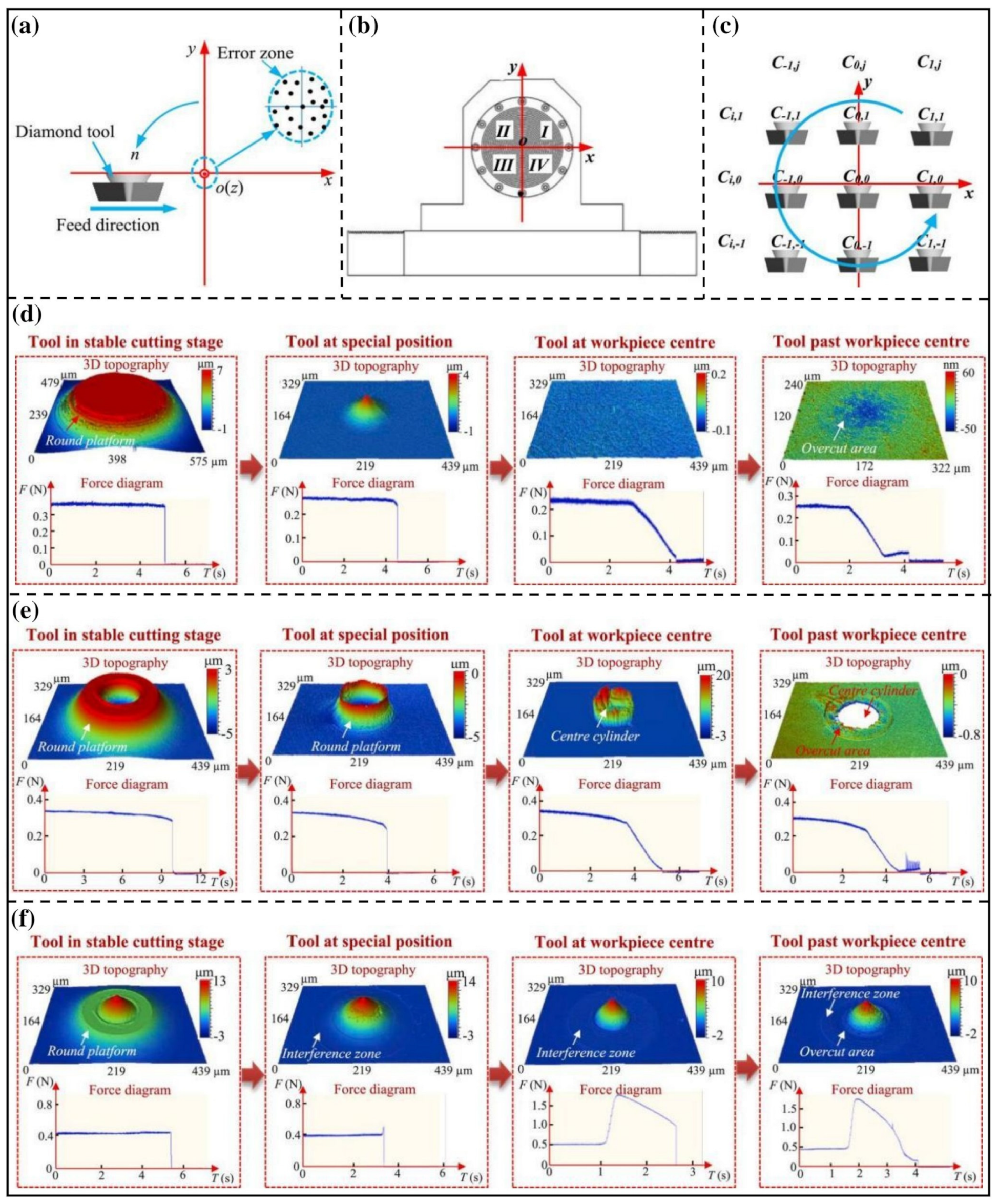
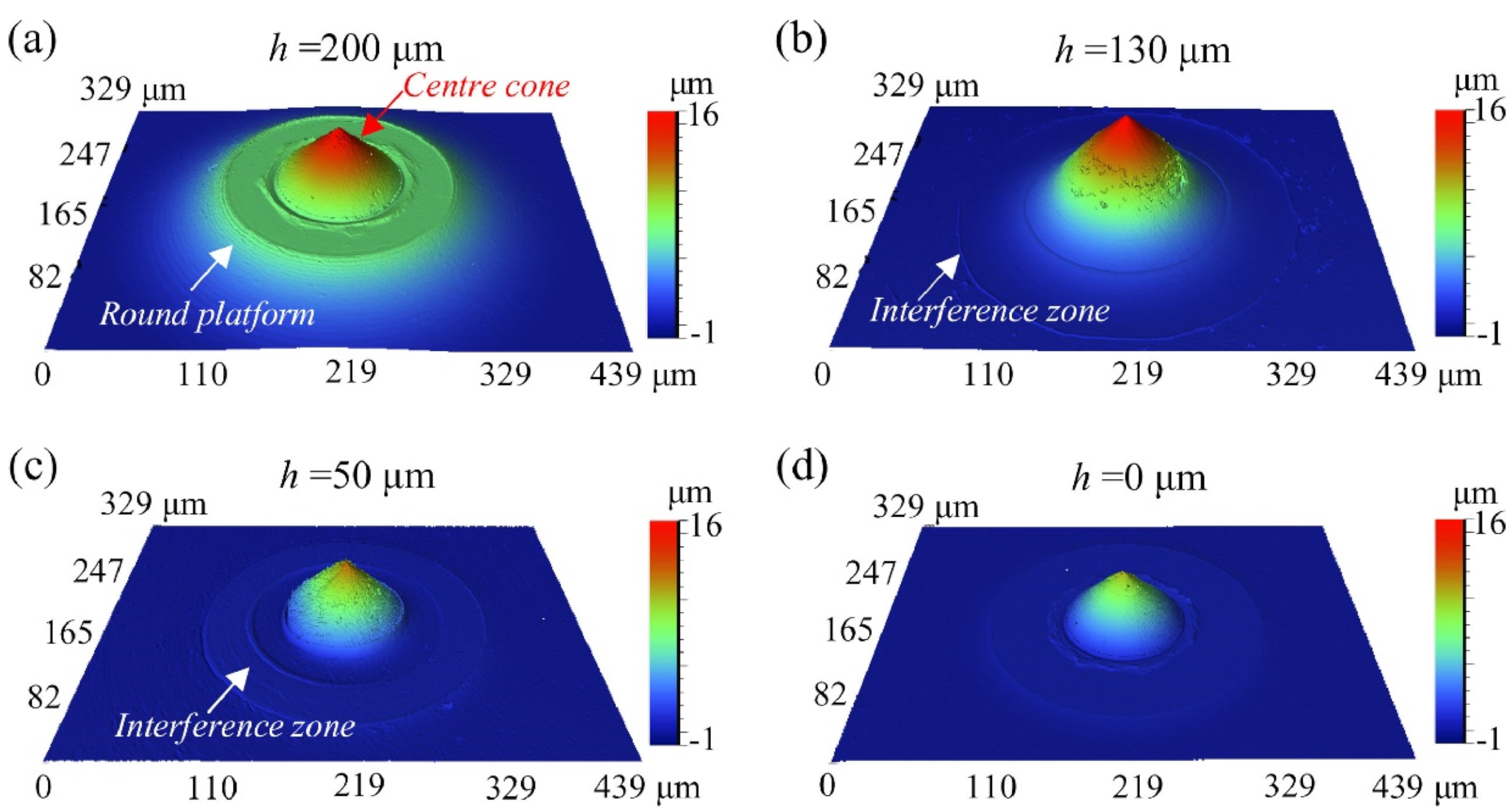
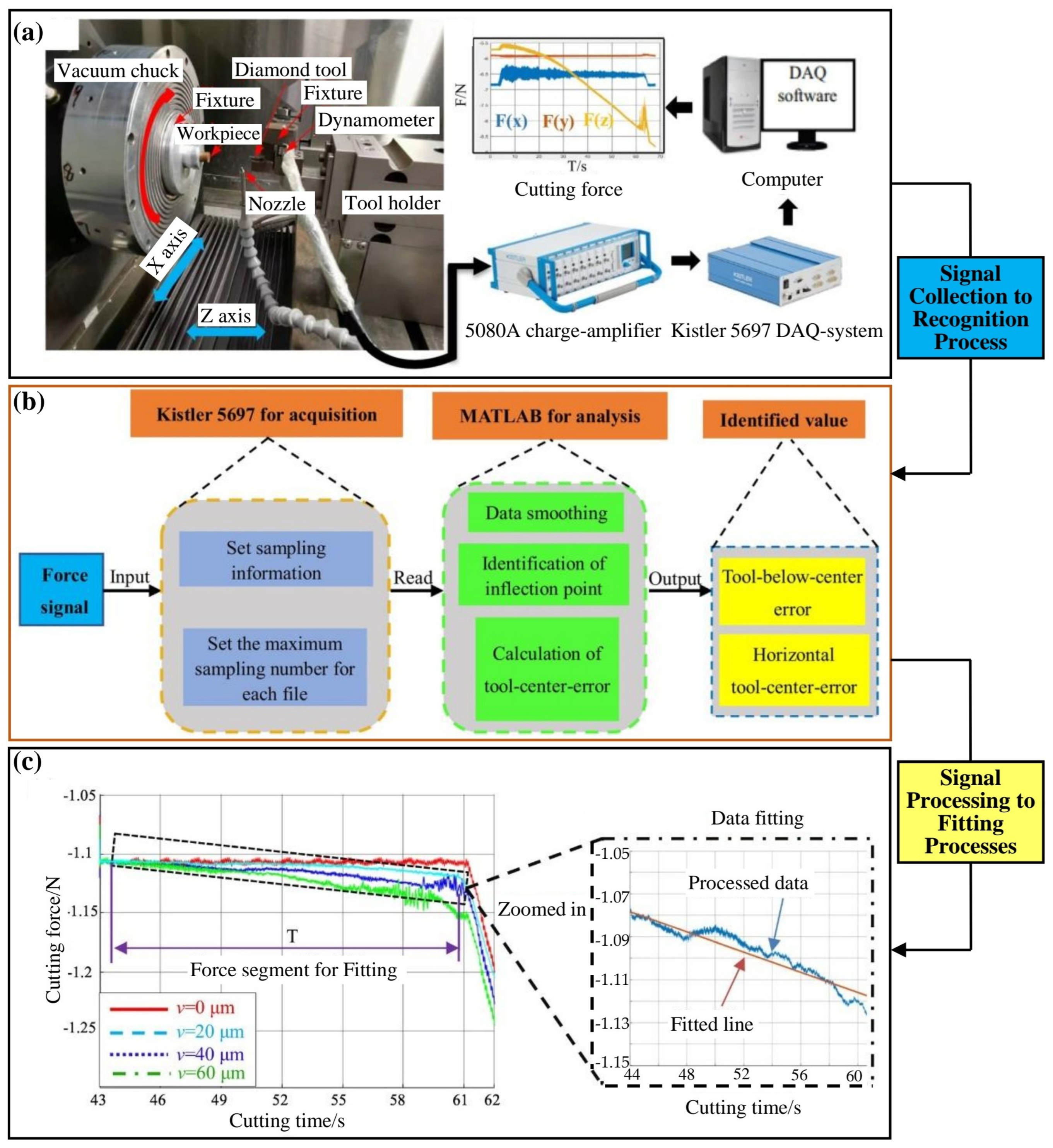
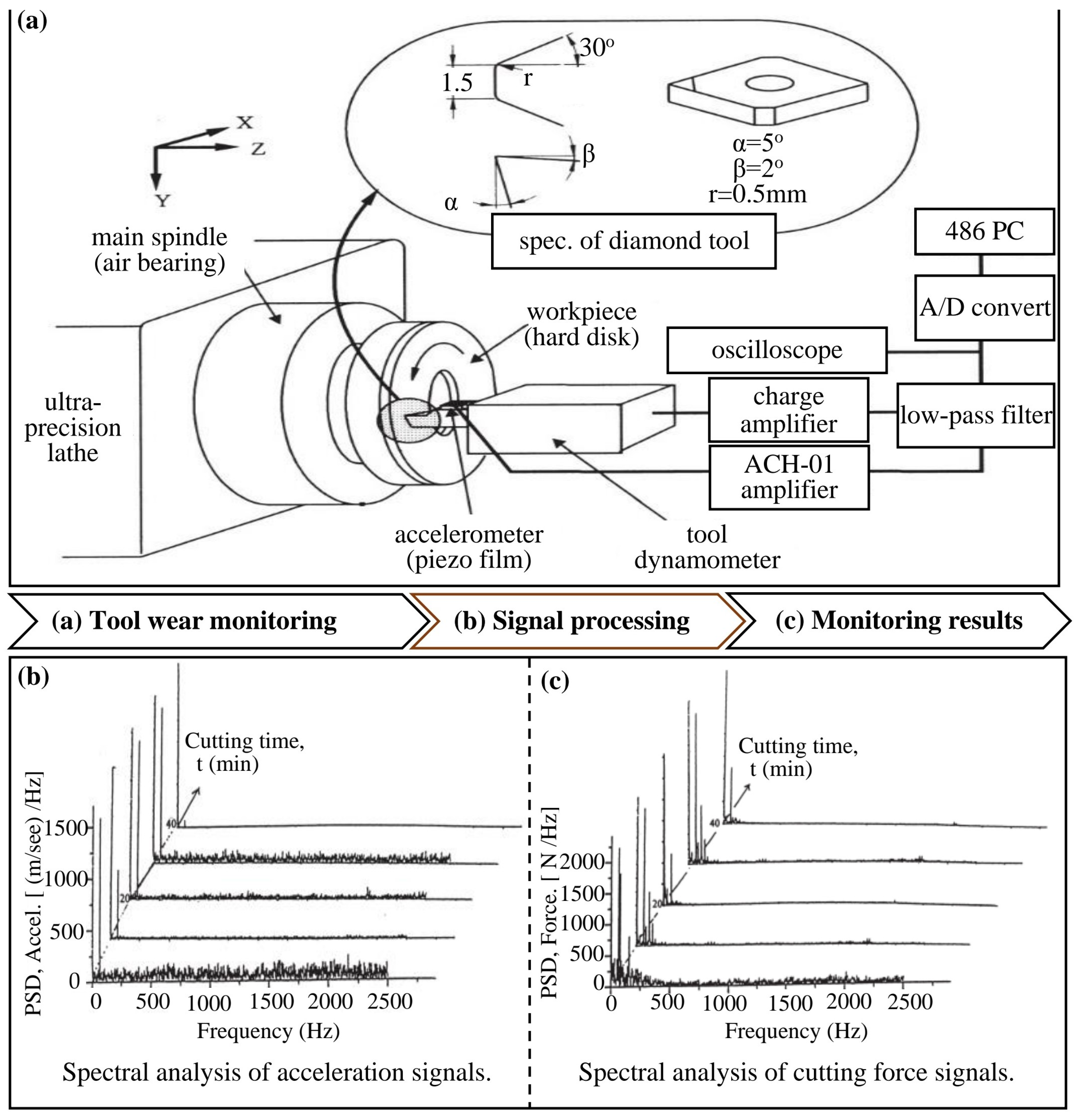


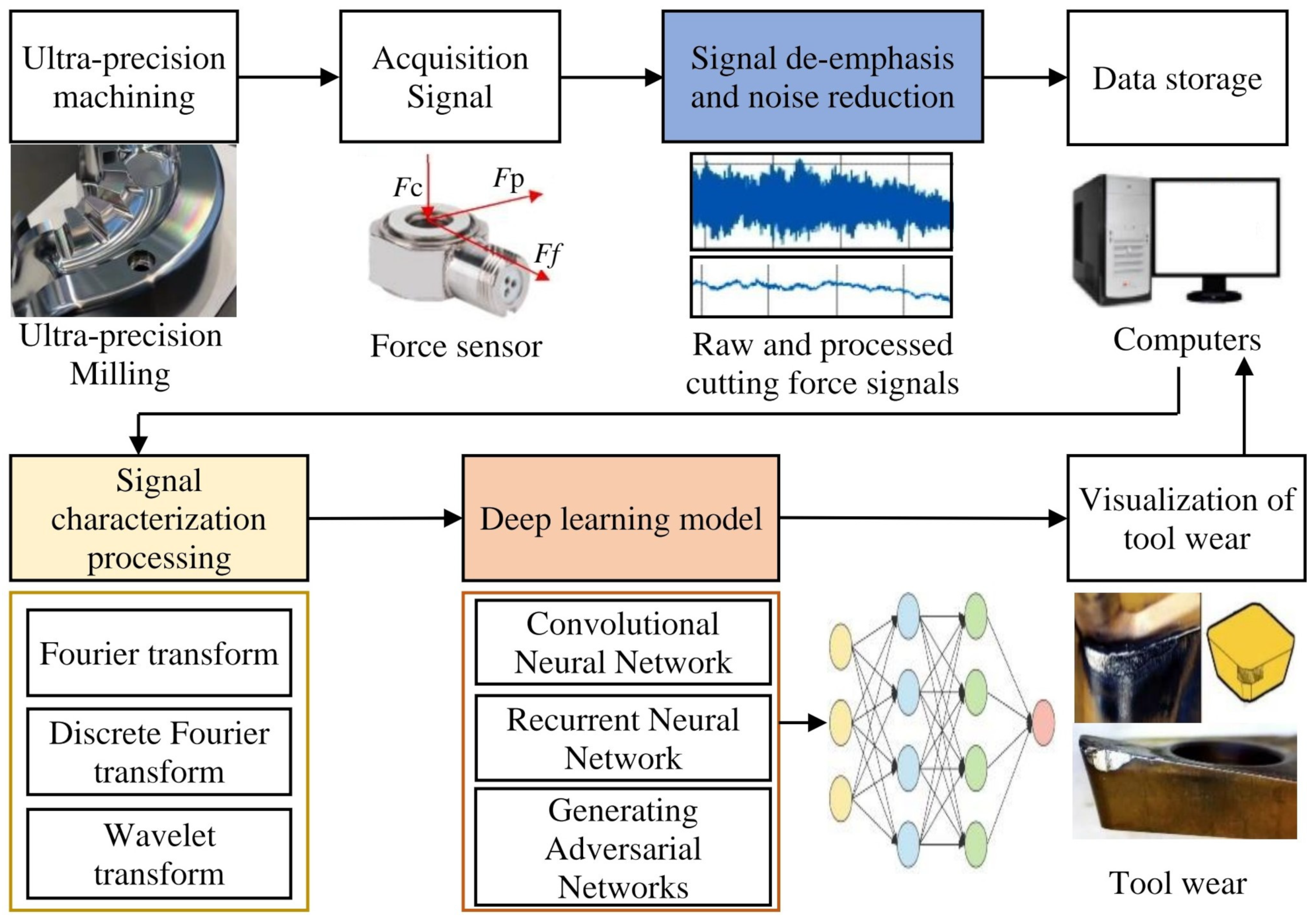
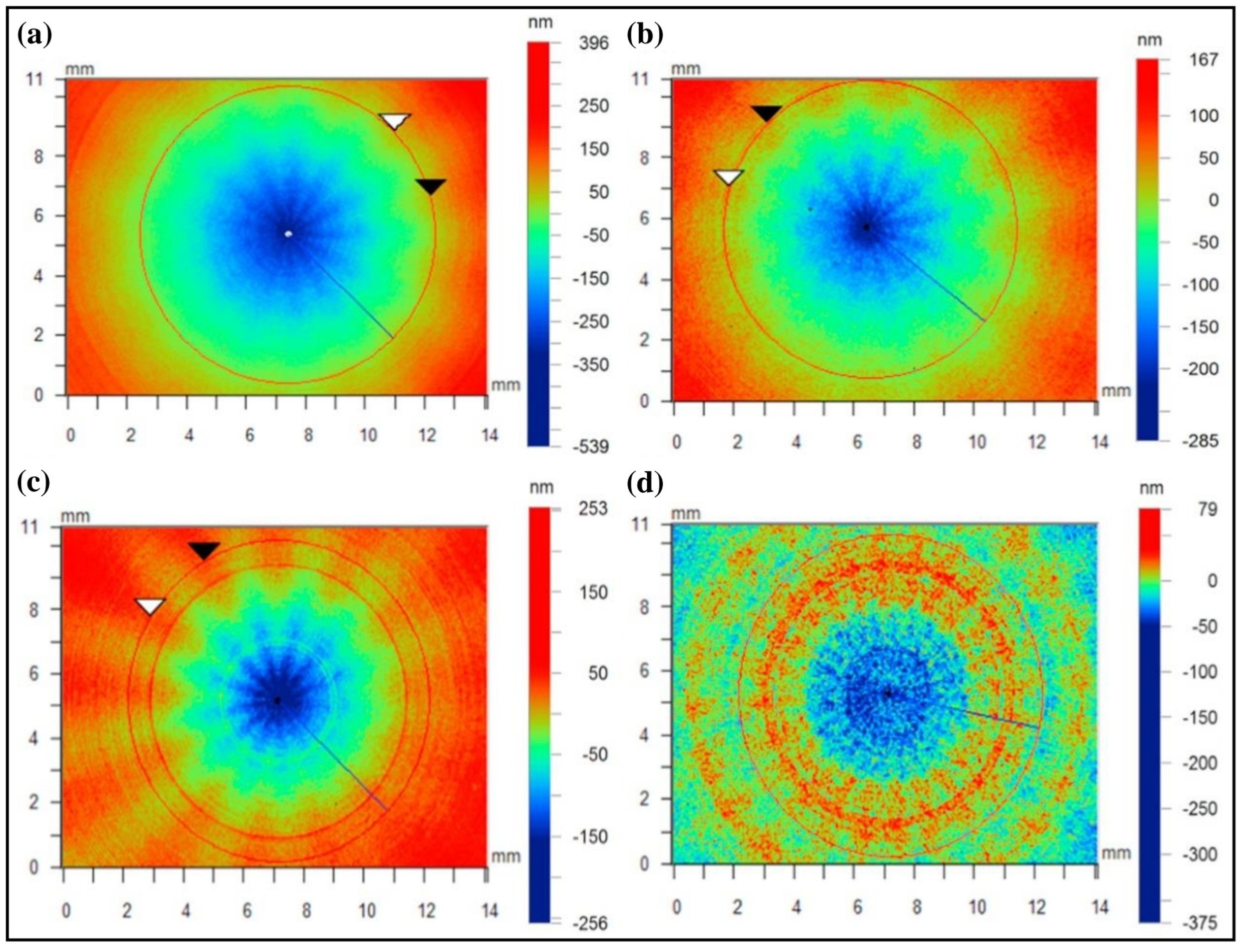

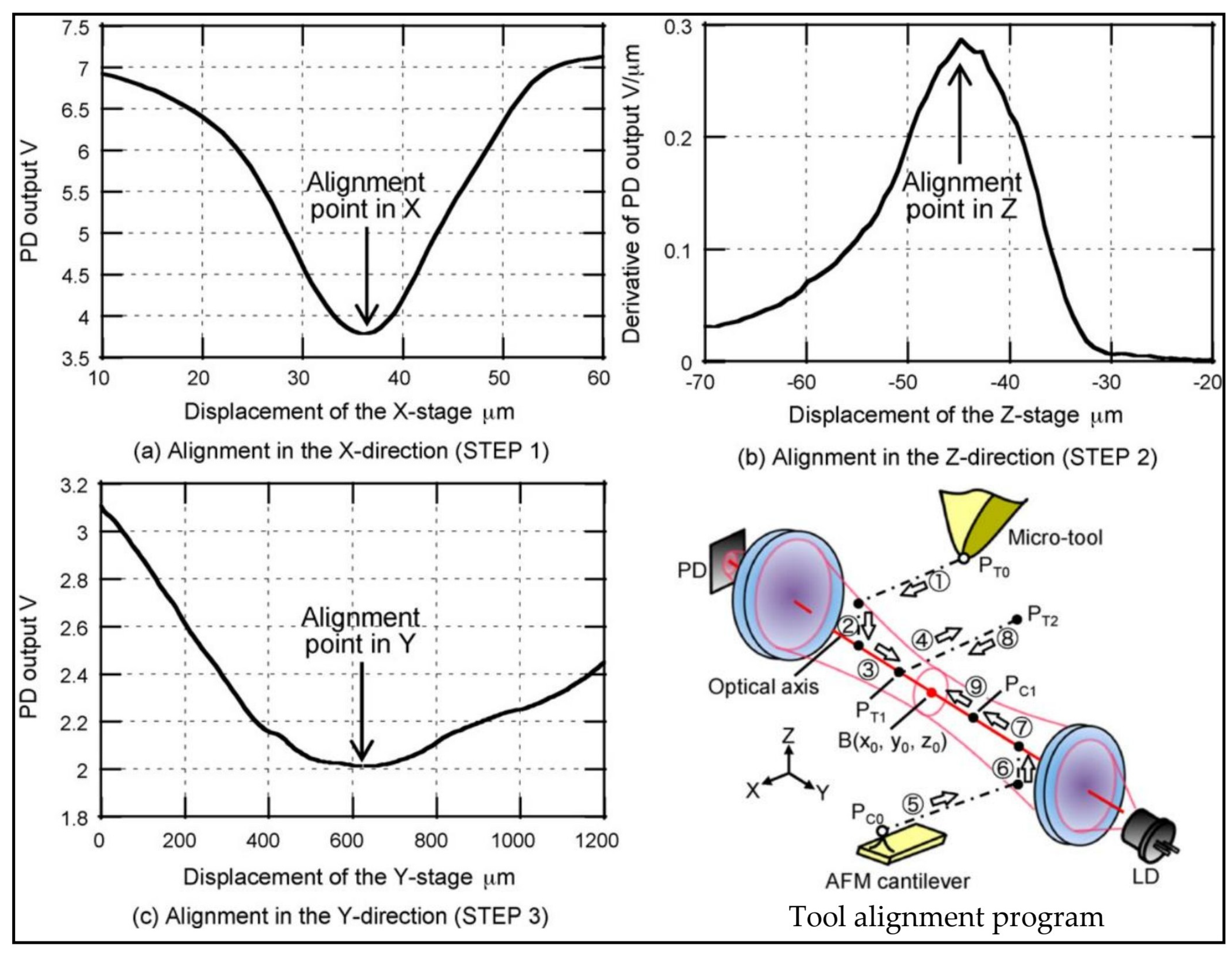
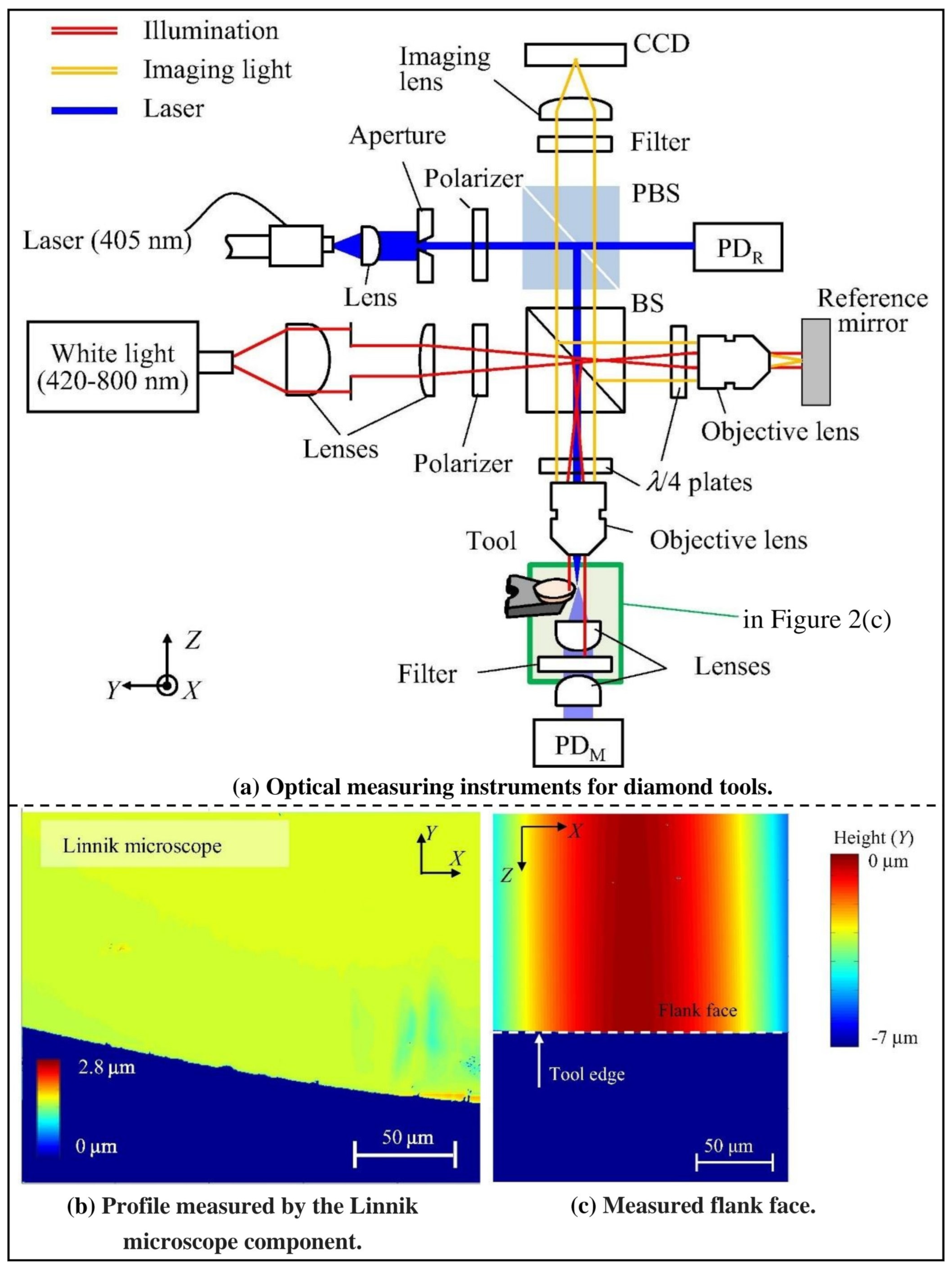
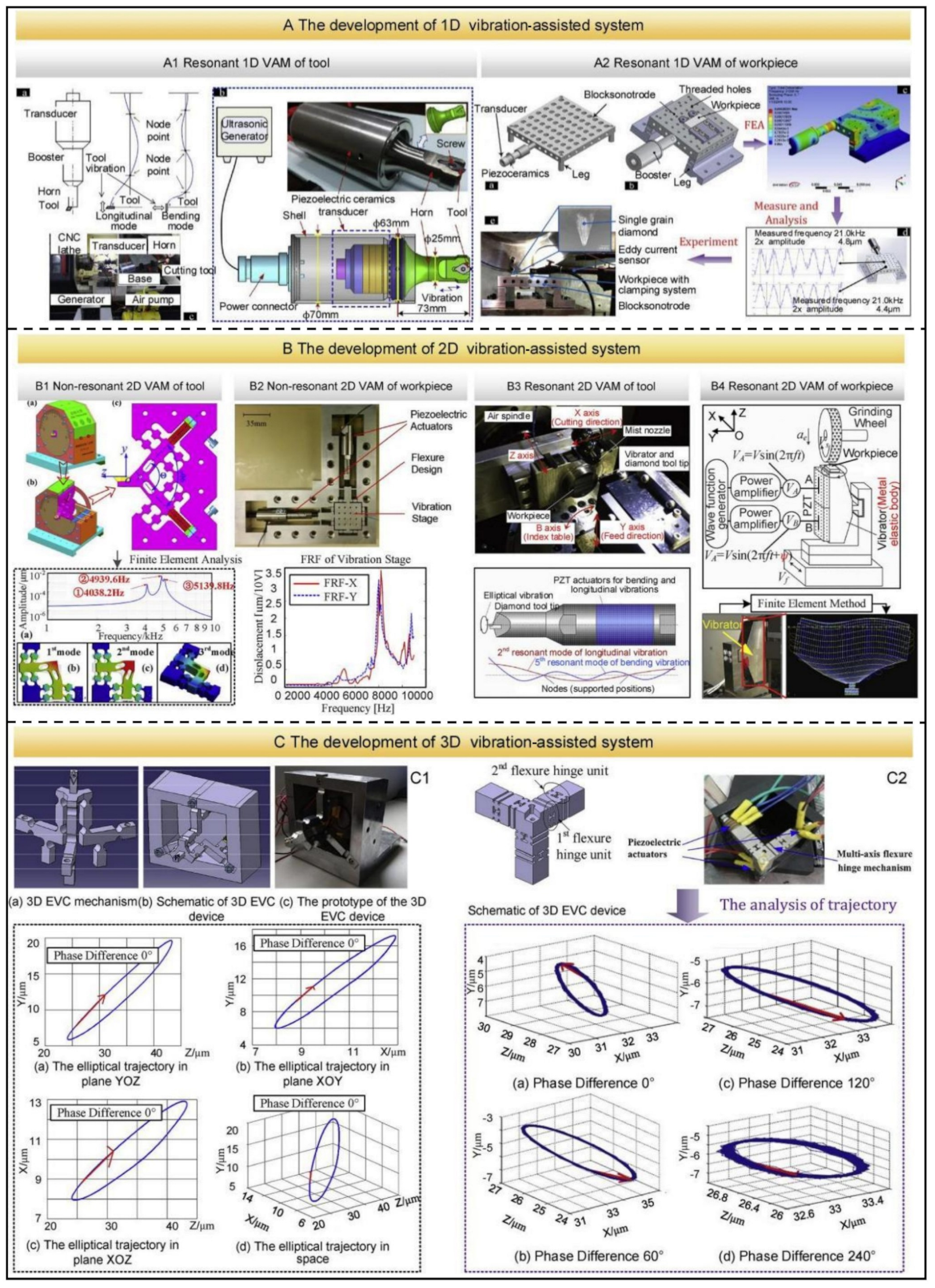




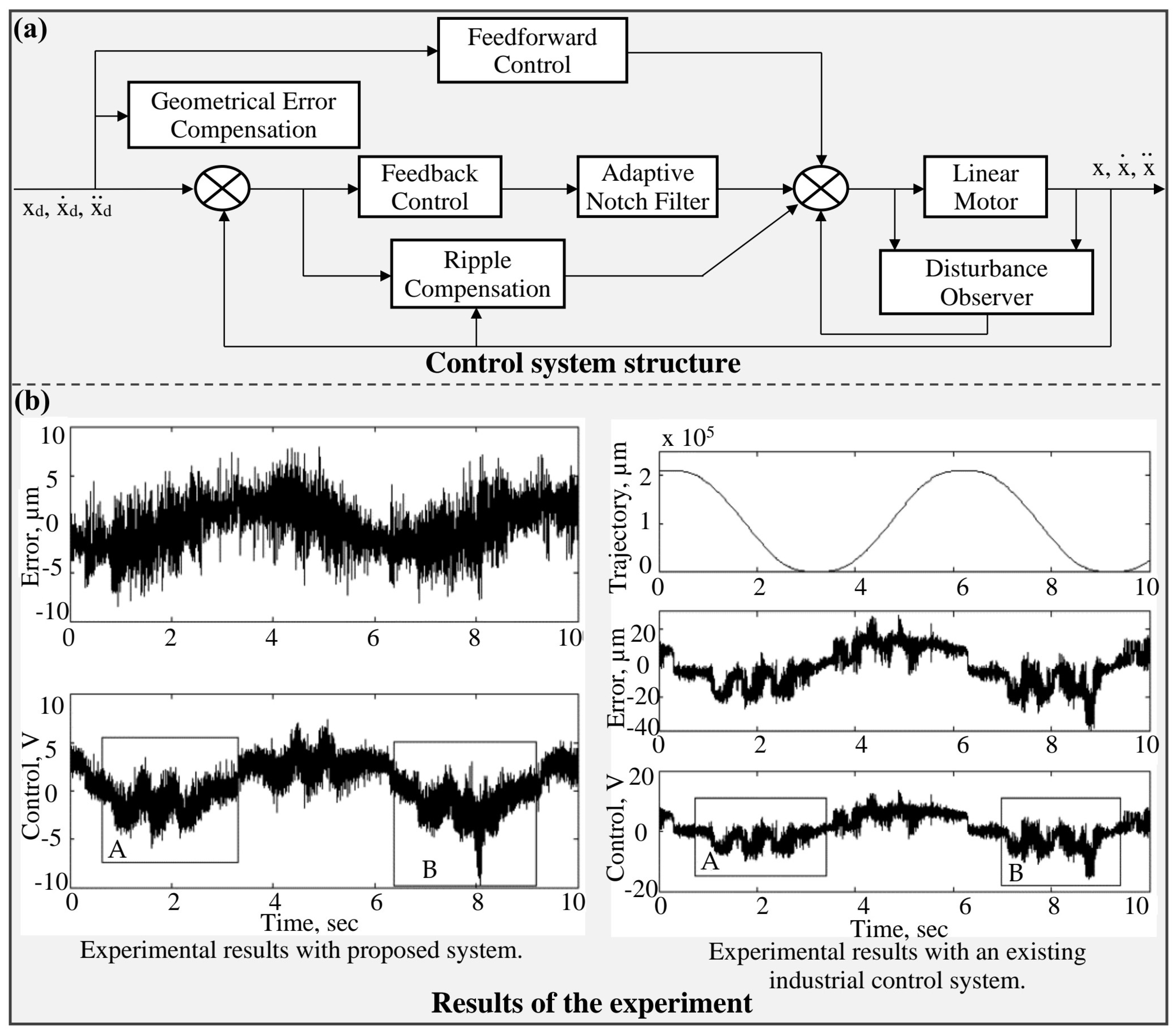
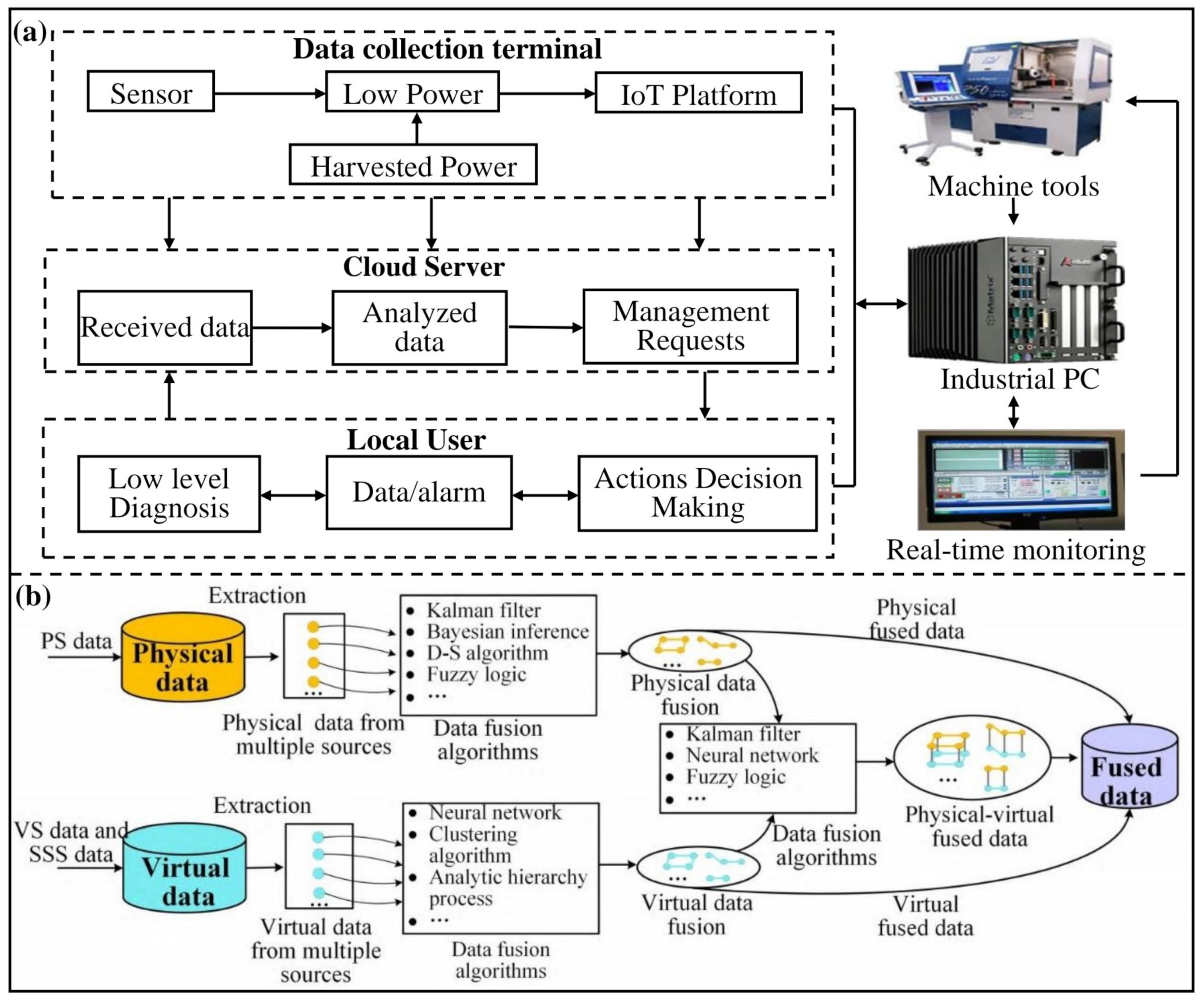

Disclaimer/Publisher’s Note: The statements, opinions and data contained in all publications are solely those of the individual author(s) and contributor(s) and not of MDPI and/or the editor(s). MDPI and/or the editor(s) disclaim responsibility for any injury to people or property resulting from any ideas, methods, instructions or products referred to in the content. |
© 2024 by the authors. Licensee MDPI, Basel, Switzerland. This article is an open access article distributed under the terms and conditions of the Creative Commons Attribution (CC BY) license (https://creativecommons.org/licenses/by/4.0/).
Share and Cite
Pan, M.; Zhang, G.; Zhang, W.; Zhang, J.; Xu, Z.; Du, J. A Review of Intelligentization System and Architecture for Ultra-Precision Machining Process. Processes 2024, 12, 2754. https://doi.org/10.3390/pr12122754
Pan M, Zhang G, Zhang W, Zhang J, Xu Z, Du J. A Review of Intelligentization System and Architecture for Ultra-Precision Machining Process. Processes. 2024; 12(12):2754. https://doi.org/10.3390/pr12122754
Chicago/Turabian StylePan, Minghua, Guoqing Zhang, Wenqi Zhang, Jiabao Zhang, Zejiang Xu, and Jianjun Du. 2024. "A Review of Intelligentization System and Architecture for Ultra-Precision Machining Process" Processes 12, no. 12: 2754. https://doi.org/10.3390/pr12122754
APA StylePan, M., Zhang, G., Zhang, W., Zhang, J., Xu, Z., & Du, J. (2024). A Review of Intelligentization System and Architecture for Ultra-Precision Machining Process. Processes, 12(12), 2754. https://doi.org/10.3390/pr12122754







